
CREATIVE EXPLORATION
AT YOUR OWN PACE
TAP INTO YOUR INNER WISDOM
Welcome to our self-directed art therapy class! Twice a month, we invite you to embark on a journey of self-discovery and healing through creative expression in the comfort of your own home. Each session will introduce you to a new theme accompanied by insightful teachings, an engaging creative activity, and thought-provoking prompts designed to promote introspection and reflection. The beauty of this class lies in its flexibility – you have the freedom to engage at your own pace, in your own time. There are no constraints here; take as little or as much time as you need to explore the depths of your emotions and experiences.
COMING SOON
The Art of Authenticity
If this week's self-directed activity doesn’t resonate with you, feel free to explore these 75 Art Therapy activities created by therapist Emily Sharp.
These activities are organized by creative medium, but if you’d like to explore a specific theme, you’ll find a categorized list on pages 21–24.
Note
The Art of Motivation
Have you ever had one of those days where the alarm goes off and you kick straight into gear?
You hustle into the kitchen and whip together breakfast, head to work early, and cheerfully check off one task after another. At the end of the day, you have enough time and energy to spend on a hobby, then kick back and relax.
For many of us, motivation feels like a mystery. One day you’re full of it, and the next day a lack of motivation makes you struggle to focus on the same tasks. And when you’re stuck in a rut, productive days like this one can feel like a fluke. After a period of focus and success, it’s natural to wonder, “Where does motivation come from, and how can I channel mine more often?”
The science of motivation is a complex interplay between different brain regions, your body’s hormones, and your ability to set goals and incentives. And it’s responsible for more than your ability to tick items off the to-do list — motivation also influences your energy levels and emotional well-being. Fortunately, you can learn how motivation works in the brain and leverage this knowledge so driven, exciting days don’t come around once in a blue moon.
What is motivation?
Motivation is the force that causes us to act on our desires or fears. It’s what inspires and energizes our behavior to advance toward our goals, even when internal or external influences get in the way.
For example, the motivation to land a promotion empowers you to perform well at work even when you feel the creeping influence of impostor syndrome. Similarly, motivation to ace a presentation convinces you to put in a few extra hours of work even though the last episode of your favorite show is tempting you to call it a day.
There are two types of motivation:
1. Intrinsic motivation: You’re self-motivated to do something because of how it makes you feel, not because of a reward. For example, someone who plays piano and practices because they enjoy learning new songs and improving their skills.
2. Extrinsic motivation: You complete a task or work toward a goal to receive a reward or avoid a consequence, like someone who plays piano and practices to win a competition or avoid chastising from their teacher.
Whether intrinsic or extrinsic, your brain’s reward system controls your motivation. It’s this system that influences the levels of dopamine in your body — a hormone and neurotransmitter that drives motivation.
Motivational theory
Although motivation is rooted in the physiological (more on this later), it’s also a deeply psychological process.
According to reward theory, a group of hypotheses that focus on the role of positive stimuli, we’re attracted to people and experiences that benefit us and fill us with positive, happy, and exciting emotions. This could be just about anything — a morning jog with the family pet, a friend who offers good advice, or the excitement of networking with new colleagues.
This school of thinking suggests we develop relationships that are more rewarding than demanding, spurring us to seek out the things that come naturally to us. An athlete may crave the dopamine rush that comes with a 10-mile run, while a homebody can’t wait to curl up in a blanket and dig into a book.
The incentive theory of motivation is a related concept focused on extrinsic motivators. Some psychologists believe our behavior is driven by rewards and reinforcements. External incentives prompt us to act a certain way, like going to work each day to earn a paycheck at the end of the month or pushing through a long book to discover the twist ending.
Both reward and incentive theories highlight the importance of developing our natural strengths and interests. After all, it’s important to feel fulfilled by each accomplishment throughout the personal or professional growth processes. Gearing up to work toward something you care about is much easier than finding the motivation to go through the motions for something that doesn’t benefit or excite you.
Positive emotions and intrinsic motivation
Remember: intrinsic motivation is when you act without needing an external reward. In other words, the joy of the act itself is enough to motivate you. But prioritizing your internal wants and needs isn’t a foolproof path to focus.
Picture a novelist. Their life revolves around writing and the joy of telling stories. This doesn’t mean the process of crafting a novel is without rough patches that challenge their drive to continue.
Motivation is a physical and psychological process, but it can also be viewed as a skill developed with hard work, practice, and perseverance. Reframing motivation in this way helps to separate likes from wants. The novelist likes to write, but they want to complete a novel — a goal that demands process, strategy, and hard work.
Dedicating your professional life to a career that matches your natural strengths and interests is a great way to inspire consistent motivation. But learning how to harness that motivation with mental fitness and a growth mindset brings a larger sense of purpose that turns intrinsic joys into big accomplishments.
What causes motivation in the brain besides just dopamine being released? First, we need to understand that research has found that three main factors influence our motivation: our physiological state, environment, and past. These factors influence what parts of the brain control motivation, which is primarily the amygdala. But let's circle back to our friend, dopamine.
The dopamine signal moving in between neurons and receptors inside the synapses of our brain allows signals to keep moving. For our motivation, the dopamine pathway is crucial. The reward pathway — or mesolithic pathway — in the middle part of our brain goes to the cerebral cortex, which is on the top of our brains.
Dopamine also travels through is the nucleus accumbens. As soon as there's an abundance of dopamine, it lets our brains know that something good will happen. Specifically, it means a reward.
When dopamine floats move through the reward system, it teaches our brain to connect this brain activity to pleasure. It keeps us in pursuit of more dopamine in each part of our brain. This then spurs our motivation. We know that if we work, we’ll have a rush of this neurotransmitter. Our brain uses that to its advantage.
The neuroscience of motivation: Dopamine
Dopamine is the happy hormone that controls the brain’s reward system and drives us to do things that feel good. It’s produced in the brain and communicates messages throughout the nervous system.
You may readily associate the feel-good emotional state caused by dopamine with a pleasurable experience like eating ice cream, taking a leisurely bike ride, or spending quality time with your friends. But it also plays a central role in your emotional state and bodily functions, including: Memory, Pleasure, Attention, Mood, Learning, and Sleep.
Dopamine motivation: How does it impact the brain?
Dopamine plays a key role in motivating you to reach your goals by activating your internal reward system. It helps teach you what feels good and bad, guiding you to choose actions that bring back the positive stuff and avoid the negative.
The reward pathway — or mesolithic pathway — begins in the middle part of your brain and extends to the cerebral cortex. The release and utilization of dopamine are carried out over several regions of the brain:
When you experience a pleasurable stimulus, the ventral tegmental area (VTA) releases dopamine.
This dopamine travels to different parts of the brain with dopamine receptors: the amygdala, hippocampus, nucleus accumbens, and prefrontal cortex. These four locations uptake dopamine, triggering unique functions.
The amygdala’s job is to interpret emotional stimuli and send out messages to different parts of the brain circuit, including the hippocampus. The dopamine tells your amygdala that you’re having a pleasurable experience, inciting positive emotions.
The nucleus accumbens translates emotional inputs into motor responses, cueing the brain to select a behavior and act on it.
Meanwhile, the prefrontal cortex (PFC) diverts focus toward the pleasurable stimulus and creates a memory. These positive and negative associations aid your ability to self-regulate your behavior.
The hippocampus, the brain’s memory center, retrieves long-term memories that continue to guide problem-solving and decision-making.
Dopamine reinforces learning and incentivizes reward-seeking. For instance, the piano player gets a taste of happy hormones thinking about playing a tune, and the act itself releases more dopamine.
How to release dopamine to increase your productivity
Researchers at Vanderbilt University found that people we consider “go-getters” — individuals who constantly seem motivated — have greater dopamine signaling, meaning they respond better to rewards.
But dopamine doesn’t stimulate motivation in a vacuum. According to behavioral neuroscience, three factors influence your motivation and interact with your body’s dopamine neurotransmitters: your physiological state, environment, and past experiences. Learning how to tap into these forces to create higher dopamine levels can help you increase your motivation and productivity.
Here are 10 ways to boost your dopamine:
1. Record your accomplishments: Reminding yourself of your achievements fills you with the confidence to push forward or fight off debilitating feelings of imposter syndrome. Likewise, the joy that comes with adding a new achievement to your list of successes can motivate you to complete a task.
2. Share your work: Inspiring others around you gives you positive external reassurance. In turn, this confidence inspires you to start a new project or push through challenges on a current one. Sharing your work also helps develop mutually beneficial connections with friends or colleagues, inspiring a group dynamic where you encourage each other to keep working toward your goals.
3. Exercise: There’s a reason it’s called a “runner’s high” — research shows that regular physical activity boosts your dopamine levels. In fact, just 150 minutes of moderate aerobic activity each week can boost your overall mental and physical health. If that number sounds overwhelming, set the fitness goal to grow your activity incrementally and do what works best for your lifestyle.
4. Prioritize your well-being: Stress decreases your ability to produce dopamine. Self-care practices such as yoga, meditation, and a nighttime routine to unwind after a long day helps fend off the mental fatigue that weighs on your mind and leaves you feeling disengaged from your goals.
5. Set achievable goals: Break down large goals into small, manageable tasks and let every check on your to-do list fill you with the motivation to keep pushing forward. For particularly difficult projects, create an extrinsic reward system. The completion of a task at work could be rewarded with a walk around the block, a coffee break, or a phone call with a friend.
6. Put on your favorite jam: Listening to your favorite music can boost dopamine levels by 9%. As a result, putting on a great playlist while you work can put you in the zone. Likewise, taking a break out of your work schedule to dance or move around picks up your energy and keeps you happy.
7. Do you: Hobbies improve your overall well-being and sense of happiness. Your brain naturally seeks out experiences that will fill you with positive emotions, so set aside time to do the things that make you feel good, like jogging, a painting class, or a card game with your family.
8. Hype yourself up: Understand that your work has importance and value. The feeling that your efforts are meaningful can be a valuable intrinsic motivator. For example, contributing to a project at work that alleviates pressure from your coworkers and makes their days easier might keep you driven and inspired. Comprehending your worth is critical to seeing the bigger picture, whether at work or home.
9. Eat a balanced diet: Foods high in magnesium and tyrosine kickstart your dopamine system. Fill your kitchen with nutritious foods like fruits, leafy greens, chocolate, and green tea.
10. Fix your sleep schedule: Improving your sleep hygiene helps you achieve consistent REM sleep, which increases dopamine levels. A few simple fixes include creating a pre-sleep routine, avoiding caffeine, and unplugging from electronics before bed.
4 behavioral drivers behind motivation
While triggering your natural dopamine pathway is an excellent way to spark motivation, understanding what pushes you toward action can fan the flames into an inferno. Let's explore four main drivers of behavior:
1. The drive to learn new things: You may be motivated to seek out the “why” and bring clarity to a subject that interests you. Every new piece of information fills you with contentment as you put the puzzle pieces together.
In the workplace, you want to sharpen your skills, expand your know-how, and earn hands-on experience. Every lesson learned is a step towards professional growth, whether you’re developing managerial skills or acquiring transferable skills to open your career options.
2. The drive to bond with others: Well-being is influenced by social health, meaning you feel better with people who make you feel comfortable and safe. You’re likely motivated by personal connection in some way or another, whether you’re an extrovert bent on having a huge social network or an introvert who nurtures a select few close friendships.
Being around like-minded people who fill your life with mutual support also motivates you to practice important social skills, like being a better listener, showing gratitude, and exercising more patience.
3. The drive to protect: You may feel a need to protect the things that fill you with joy. These could include a person, a place, your life’s work, or your value system. When the things you love are threatened, you’re motivated to stand up and defend them.
Take stock of what makes you tick in your personal and professional life. If you value your sense of independence and flexibility, this might motivate you to prove you’re ready for a promotion or make the transition to remote work for more freedom of time.
4. The drive to gain: Success doesn’t have a finish line. Every single day, you add big and small items to your list of accomplishments. These could include a successful presentation, special thanks from a manager, or a promotion and a new corner office.
Some accomplishments can be achieved quickly, while others take time and perseverance. Learning to value the milestones that require both short-term and long-term commitment provides a sense of fulfillment that pushes you forward.
Find your motivation
Good news: You don't have to be a neuroscientist to understand and harness the science of motivation. You simply need to find what moves you and put in the right amount of effort to achieve your goals.
Understanding how motivation works in the brain allows you to tune into your body and hack its natural functions, whether you’re looking to activate your dopamine system or learning to complement intrinsic motivation with planning and hard work. Having the right mindset is also crucial when learning how to become and stay motivated.
From: How Motivation Works in the Brain: Exploring the Science
Articles
Videos
How to Get Motivated and Stay Motivated (17 minutes)
The Power of Self-Compassionate Motivation (3 minutes)
How to Get Motivated Even When You Don’t Feel Like It (5 minutes)
How to Set the Right Goals and Stay Motivated | Ayelet Fishbach (17 minutes)
Continue Your Learning
Art Supplies
Paper (preferably a journal or sketchbook)
Pen or pencil
Coloured markers, crayons, pastels, or coloured pencils
Creative Activity
Directions
Motivation is built through consistent, small steps. By acknowledging each accomplishment and connecting with what truly matters to you, you can create a cycle of lasting motivation that grows stronger with each action you take. This activity will show you how to celebrate your wins and trust in the power of these small but meaningful steps.
Step 1: Start with Small Action
Begin by choosing one small, manageable task you can complete right now, but that you’ve been putting off, such as straightening up your desk, cleaning a drawer/cupboard, or organizing a small stack of papers.
Action: Take your time completing this task, focusing on how it feels to accomplish something, even if it’s small. Notice any relief, satisfaction, or pride that comes with it.
Reflect: Think of this as your “starting spark”—the small first step that fuels larger actions over time.
Step 2. Capture the Reward
On a sheet of paper, write down a few words or sketch a simple drawing that represents the positive feeling you experienced from completing your first action. Examples might include “Pride,” “Accomplishment,” or a small symbol like a sun or smiley face.
Reflect: Take a few deep breaths and give yourself credit for completing the task. Let yourself truly feel and appreciate this small success, allowing the positive feeling to sink in.
Step 3. Visualize Your Motivation
Think about something in your life you’d like to change but struggle to find the motivation for. It could be exercising more, eating healthier, fostering a positive outlook, or practicing regular self-care. Now, consider what personally inspires you to pursue this change—such as values, goals, or dreams that are deeply meaningful to you. These could be family, personal growth, creativity, or inner peace.
On your paper, create a small drawing or symbol that represents this core motivation. For instance, you might draw a heart for family, a tree for personal growth, or a flame for passion.
Use colours to make this symbol stand out, and see it as a reminder of the strength and energy that these motivators bring to your life.
Step 4. Three Perspectives
Think back to the change you’d like to make in your life from Step 3. Imagine approaching this task from three different perspectives:
“I’m doing this simply to get it done.”
“I’m doing this to help someone or make a positive change in my surroundings.”
“I’m doing this to build something meaningful that aligns with my goals or values.”
Reflect: Choose the perspective that feels most inspiring to you and write down how it changes your feelings toward the task. This step is all about recognizing the deeper “why” that can make even the most challenging tasks feel worthwhile.
Step 5. Set One Small Habit for the Week
Think of one small, meaningful action you can commit to every day this week, like doing 10 minutes of exercise, writing down three things you’re grateful for, or spending five minutes each morning practicing mindfulness or deep breathing.
Write down your action on your paper and make it feel personal by adding some colour or doodles around it. A little creativity can make your commitment feel more fun and motivating.
Promise yourself to pause and acknowledge the positive feeling each time you complete this action throughout the week, reinforcing the reward that builds motivation. Each time you succeed, give yourself credit for that small but meaningful step forward.
At the end of the week, grab a pen and notebook and write down your answers to the following questions:
1. How did it feel to commit to a small, meaningful action each day? Were there any moments when it felt easier or harder than expected?
2. What changes, if any, did you notice in your motivation or mood throughout the week?
3. Did your perception of the task change over the week? If so, how?
4. Did you experience any obstacles that made it difficult to complete your chosen action? How did you handle those challenges?
5. What have you learned about yourself and your ability to build small, lasting habits?
Set an Intention
Before you begin, I invite you to close your eyes and take a few deep breaths. Let yourself be here right now in this moment. Turn your attention inwards, place your palms face down on the paper in front of you, and set an intention for this creative exercise. You may choose to say aloud or silently in your heart, "With open awareness and curiosity, I invite motivation and inspiration into this creative journey. Through mindful exploration, I will reconnect with the sources that inspire and drive me forward." Give the paper gratitude for holding space for you today.

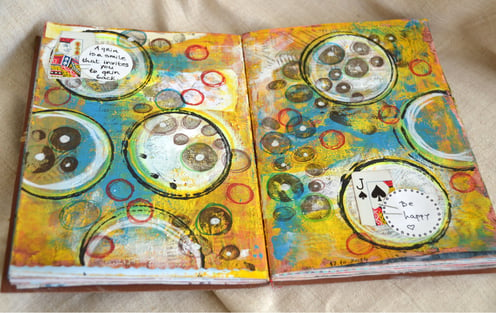
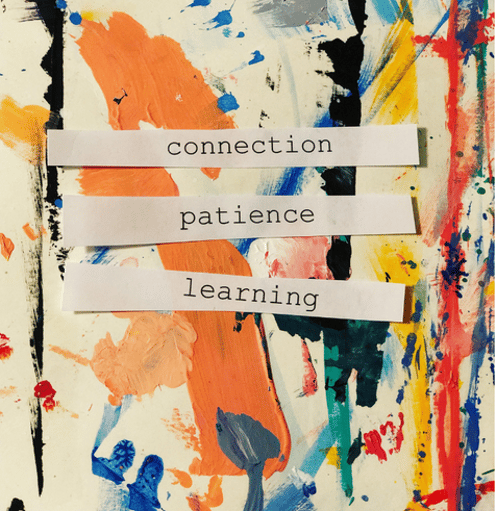

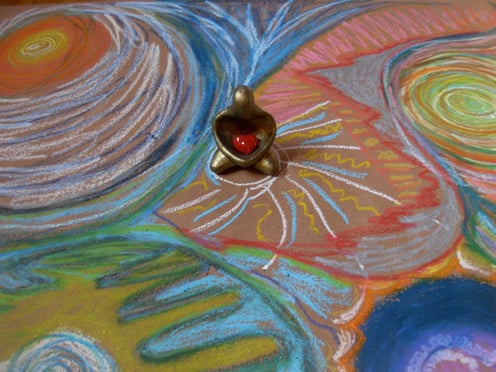
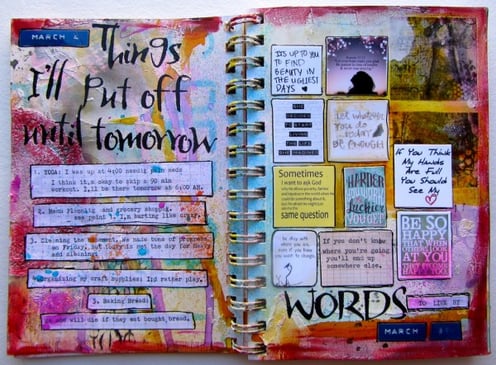


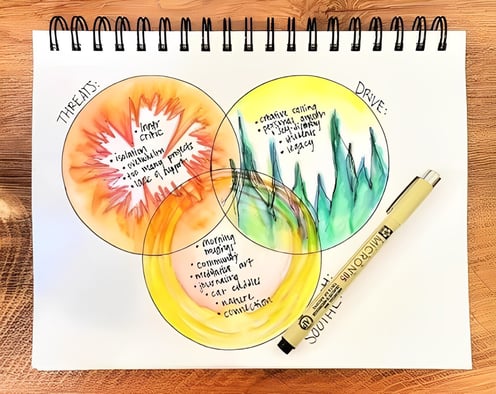











Personal Reflection
Prepare a Calm Space for Creative Exploration
Take a few moments to prepare a peaceful, nurturing space for yourself. You might begin by gently tidying the area and gathering any art supplies you’ll need. When you’re ready, light a candle or some incense to symbolize the start of this journey. If it feels soothing, put on some soft, relaxing music—acoustic, ambient, or nature-inspired sounds can help create a serene atmosphere. (If you’d like recommendations, consider exploring Yellow Brick Cinema on YouTube.) Let the gentle glow of the candle and the tranquil music guide you into a place of ease, inviting you to be fully present for this creative, healing session.
The Art of Feeling Less Anxious
One of the most powerful aspects of anxiety is its ability to convince you that you are alone in your suffering—that the fearful, shaky feeling is unique to you. But the truth is that everyone is affected by anxiety at some point, whether in response to a real threat or a perceived one. In fact, we’re hard-wired to want to flee when things get scary; it’s what keeps us alive and safe.
But when anxiety begins to arise regularly in the absence of an actual threat, it can have a negative effect on your physical health, your mood, emotional wellbeing, and even your relationships with others.
Symptoms of anxiety often have a root cause, sometimes beyond our awareness. Beneath the shakiness, sweaty palms, and queasy stomach may reside a reason you’re hurting, afraid, uncertain, or ashamed.
This root cause of anxiety may be unique to you and your circumstances.
You may get anxious about a final exam because you think you’re incapable. You might feel terrified to ask for help because you grew up in a family that equated support-seeking with weakness. Your social anxiety could stem from a fear that you’re not good enough.
Anxiety is a messenger, says Linda Ugelow, a speaking confidence coach from Bedford, Massachusetts, and author of the book “Delight in the Limelight: Overcome Your Fear of Being Seen and Realize Your Dreams.”
Anxiety may alert you of unresolved conflicts or traumas. In some instances, it may also be a sign of an underlying medical condition that requires professional support.
In any case, symptoms of anxiety can be managed and you can find a way to live more calmly and confidently.
Why is it important to identify the root of your anxiety?
When you experience symptoms of anxiety — feeling overwhelmed and jittery, unable to focus or falling asleep — you might direct all your attention to the physical signs and sensations.
This is natural. After all, these symptoms can be too loud to ignore.
As you instinctively focus on easing your apprehension, you may spend much less time — if any — on naming what’s occurring beneath the surface.
But using anxiety-relieving coping strategies without understanding why you’re anxious can become a Band-Aid or quick fix, says Jennifer Weber, PsyD, a psychologist in Lake Success, New York, and director of behavioral health for PM Pediatrics Behavioral Health.
As a result, you could miss out on the opportunity to resolve the underlying cause.
Working on learning the original root of your anxiety may consist of two processes:
1. identifying what you’re really afraid of
2. understanding why you’re really afraid of it
This may help you feel empowered, move forward, and make progress.
For example, when you realize your Sunday scaries are linked to your fear of not doing a great job at work, you refocus on showing up on time and completing your projects, says Lynn R. Zakeri, LCSW, a therapist based in Skokie, Illinois.
And maybe you further explore your feelings of inadequacy and realize they’re connected to specific past experiences.
This understanding may also help you be gentler with yourself and work more efficiently, realizing you don’t have to earn your self-worth.
Ultimately, identifying anxiety’s origins could help you identify and work on hurtful patterns to build a more fulfilling, freer life.
How to explore the root of your anxiety
Exploring the root cause of your anxiety and managing your symptoms may be better done with the support of a mental health professional. It’s highly advisable that you reach out to one that specializes in anxiety disorders, especially if doing these exercises.
Getting to the root of your anxiety starts with managing your current anxiety symptoms so you can think clearly and self-reflect, says Natasha Bryant, a licensed clinical social worker and coach in Philadelphia, Pennsylvania.
To soothe your anxiety, try placing one hand on your chest and the other on your belly, paying attention to when each expands as you breathe in and out, suggests Bryant.
Then, you can grab a notebook and use these ideas to dig deeper into the reasons behind your anxiety symptoms.
Keeping a kind mindset
As you start exploring your anxiety, remember to listen to yourself as you’d listen to a friend: with compassion, curiosity, and patience.
Consider examining your anxiety with the intention to understand. It might even help to see your anxiety as a separate entity or a younger you.
Either way, try to be gentle with yourself and proceed with care.
Getting acquainted with your anxiety
To begin your self-exploration, it may be helpful to first understand how your anxiety functions.
In your journal, Bryant suggests taking note of:
• when your anxiety happens
• where it happens
• what’s happening at that time physically and mentally
• how long the anxiety symptoms last
Listing your fears
“When we can really articulate what we are afraid of […] it becomes a real monster to tackle, not simply this idea of monsters,” says Zakeri.
She suggests making a list that starts with the phrase “I am scared of.” As you’re writing, try to avoid judging what comes out, giving yourself full permission to express your fears — even if they sound silly, unfounded, or embarrassing.
Try to write them all, anyway.
Tamar Chansky, PhD, a licensed psychologist in New York City, also suggests asking yourself these questions about each of the listed fears:
• When do I first remember having this fear?
• What was going on at that time?
Diving into the fear rabbit hole
Another way to isolate your fear is to name the anxiety-provoking situation and keep asking the question, “And then what will happen?” says Chansky, author of “Freeing Yourself from Anxiety” and “Freeing Your Child from Anxiety.”
To stop fixating on your fears, try to fact-check the specific consequences you’re afraid of. Is there evidence supporting this will in fact happen?
After that, consider creating “courage challenges” by doing some of the things you fear, says Chansky. This is an exercise from exposure therapy, an effective approach for treating anxiety.
Pinpointing a pattern
To help you connect the dots and find patterns when you’re feeling anxious, try to explore the below questions, suggested by Rachel Dubrow, a clinical social worker in Northfield, Illinois:
• How long has it been since I felt differently than I do now?
• What has changed in my life over the last 3 months, 6 months, or year?
• Are there other times in my life, past or present, where I’ve felt the same way but the situation was different?
• If yes, what are they? Is there a common thread between situations?
Exploring your home life
Because anxiety can run deep, it may be helpful to reflect on your childhood.
Keep in mind, Ugelow notes, this exploration isn’t about blaming your family or yourself. Instead, you can acknowledge that your loved ones did the best they could with the resources they had and might’ve hurt you with their words and actions.
Ugelow suggests exploring these questions, focusing on your feelings and the details of your memories:
• What were my family relationships like?
• Were there any times that I felt dismissed, shamed, ridiculed, punished, or afraid?
• Did I ever feel like I wasn’t good enough or I was a burden?
• Did I feel like it wasn’t OK to express myself?
Honing in on your habits
The root of anxiety isn’t always psychological. Your habits may spark or provoke your anxiety, too.
Some research suggests that not sleeping enough may increase daytime anxiety, for example. Alcohol use can also worsen anxiety in some people.
To explore your habits, consider asking yourself:
• Has my anxiety or its intensity increased lately?
• Have my habits changed?
• How’s my sleep?
• Have I been drinking more, or feeling progressively worse after drinking?
Let’s recap
When living with anxiety, you may naturally just want the symptoms to go away. But using relaxation techniques without getting to the root of anxiety may lead you to miss the chance of learning what’s really going on — and finding long-term helpful solutions.
Recurring anxiety may be a sign of unresolved problems. Focusing on pinning down what you’re really afraid of and exploring why you’re afraid of it can help. Remember that anxiety is manageable and doesn’t have to be permanent in your life — whether you pinpoint the specific cause of it or not, reaching out for professional support is always advised.
From: 8 Tips to Get to the Root of Your Anxiety and Why It Matters
Articles
Videos
What Is Anxiety Really? Stress, Anxiety, and Worry (12 minutes)
How to Cope with Anxiety | Olivia Remes | TEDxUHasselt (15 minutes)
Why We Worry All the Time and How to Cope (6 minutes)
The Secret Trigger Behind Your Depression and Anxiety (8 minutes)
Continue Your Learning
Art Supplies
A large sheet of paper (the bigger, the better! You can tape or glue several sheets together to create one big canvas)
Markers, coloured pencils, pens, crayons, pastels, or paints (any materials that feel right to you)
Creative Activities
Directions
This exercise helps bring clarity to what’s fueling your anxiety, letting you visualize it in a way that feels more manageable. By mapping out these thoughts and feelings, you can find small steps forward with a bit more peace. This activity uses mind mapping which is a simple way to put complex feelings into a visual form. You start with a central thought, then let the connected feelings, thoughts, and reactions branch out from it. This can be especially soothing when your anxiety and worries feels tangled and overwhelming.
Step 1: Choose A Central Issue
Take a few deep breaths and think about a specific situation or worry that’s been on your mind. Write this in the center of the page, then circle it or draw a square around it.
Step 2: Create Branches
Let yourself draw soft lines branching out from the center. Label each line with one of these words:
Triggers – These are moments or things that seem to start or deepen your anxiety and worry.
Emotions – The feelings that come up, like fear, worry, or sadness.
Physical Sensations – Describe how your body feels, like tension, restlessness, or shakiness.
Thoughts – Write down any difficult thoughts or self-criticisms that are coming up for you.
Interactions – How do others around you impact these feelings?
Comforting Techniques – List anything that has brought you even a small sense of relief or calm.
Step 3: Add Details
Under each label, add words, phrases, or drawings that describe what you’re experiencing. Take your time and try not to judge what comes out; there’s no right or wrong way to do this.
Mind mapping can feel like a gentle release, a way to place your anxieties and worries outside yourself where they might feel a little lighter. There’s strength in seeing these thoughts on paper, and you’re taking an important step by simply letting them be seen.
Adapted from: 10 Art Therapy Exercises for Anxiety
After finishing your mind map, take a few moments to reflect on what you've created. Here are some questions to guide your reflection:
1) What patterns or connections did you notice that you hadn’t seen before?
2) Which part of the map feels the most intense or stands out the most to you? Why do you think that is?
3) Looking at your map, is there one area where you feel you could make a small, comforting change?
4) What comforting techniques have worked best for you in the past, and how might you use them now?
5) How does seeing your anxiety mapped out make you feel about this issue as a whole?
Set an Intention
Before you begin, I invite you to close your eyes and take a few deep breaths. Let yourself be here right now in this moment. Turn your attention inwards, place your palms face down on the paper in front of you, and set an intention for this creative exercise. You may choose to say aloud or silently in your heart, "Today, I set the intention to explore my anxiety and worry through art, creating a safe, non-judgmental space to express and release what feels heavy. This is a time to nurture self-compassion and find small moments of calm in my creative process.” Take a moment to give the paper gratitude for holding space for you today.
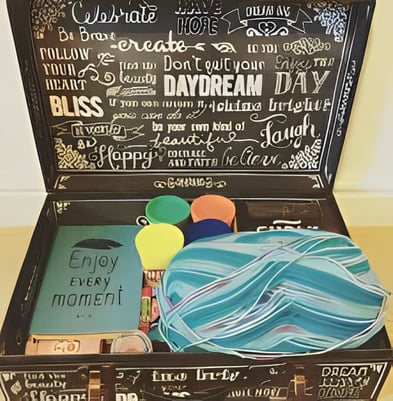
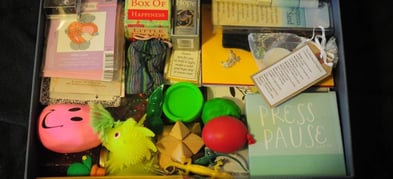








Personal Reflection
Activity 1 - Mapping Your Anxiety and Worry
Activity 2 - Creating a Self-Soothe Box
Art Supplies
A small to medium-sized box or container (any box you like; you can decorate it if you wish)
Sensory items that evoke calm (think about the five senses: touch, sight, smell, sound, and taste)
Pen and paper (for personal notes, quotes, or calming reminders)
Optional: Art supplies for decorating your box
Directions
A Self-Soothe Box is a personalized, sensory tool that you can turn to during moments of anxiety, worry, or low mood. By gathering items that bring comfort, grounding, and relaxation, you create a tangible source of calm that’s tailored to your needs.
Step 1: Gather Comforting Items
Begin by reflecting on the purpose of this box: it’s a source of support that you can return to anytime you feel overwhelmed or anxious. Think of it as a small oasis for comfort and grounding.
Begin by selecting items that appeal to each of your senses. Choose things that make you feel relaxed and safe. Here are some ideas:
Touch: A smooth stone, soft fabric, stress ball, or small fidget toy.
Smell: A small vial of essential oil, a scented candle, or a sachet of dried lavender.
Sight: Photos, artwork, or a meaningful object that brings you joy or peace.
Sound: Pre-recorded music, a thumb drive with favorite songs, or a playlist link written on a card.
Taste: A piece of dark chocolate, herbal tea bags, or a small snack that grounds you.
Step 2: Add Personal Touches
Write out calming affirmations, quotes, or even a comforting letter to yourself for moments when you need reassurance. Include memories that remind you of strength or joy.
Step 3: Include Activity Reminders
Consider adding a small notepad or cards with grounding activities, such as breathing techniques, word puzzles, colouring pages, or a short list of activities you can do to refocus your mind.
Step 4: Reflect and Personalize
Think about whether there’s anything else that might bring comfort and make your box uniquely yours. Remember, you can change or update it whenever you need to.
Your Self-Soothe Box becomes a way of caring for yourself, reminding you of what brings peace and calm during tough moments. It’s a physical reminder that relief is within reach, and it gives you a set of resources to turn to, designed entirely by you.
Adapted from: How to Make a Self-Soothe Box
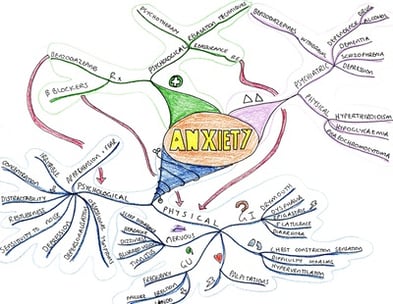

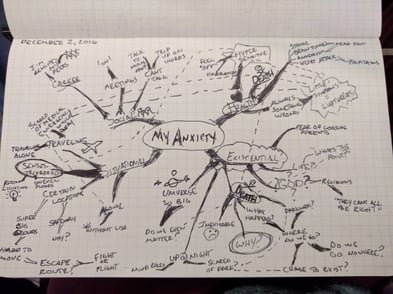
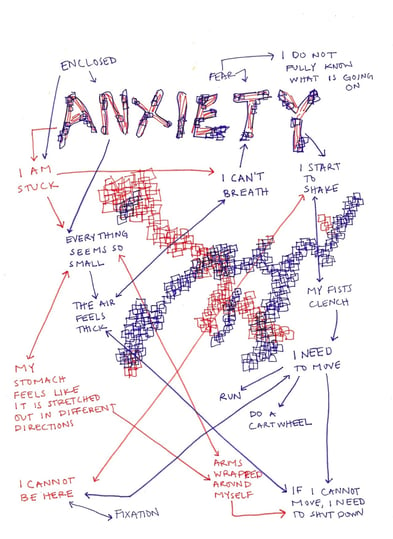
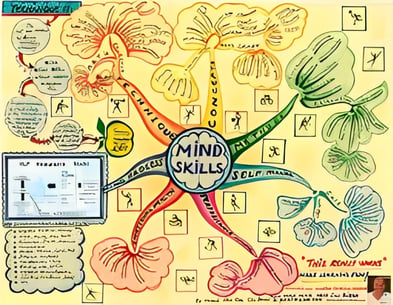





Prepare a Calm Space for Creative Exploration
Take a few moments to prepare a peaceful, nurturing space for yourself. You might begin by gently tidying the area and gathering any art supplies you’ll need. When you’re ready, light a candle or some incense to symbolize the start of this journey. If it feels soothing, put on some soft, relaxing music—acoustic, ambient, or nature-inspired sounds can help create a serene atmosphere. (If you’d like recommendations, consider exploring Yellow Brick Cinema on YouTube.) Let the gentle glow of the candle and the tranquil music guide you into a place of ease, inviting you to be fully present for this creative, healing session.
The Art of Liking How You Look
How often do you look in the mirror and say “If I could just lose ten pounds, then I would be happy”? Unfortunately, the majority of women and girls (and increasingly men and boys) are dissatisfied with their bodies, and many take extreme measures in an attempt to change them. For example, one study found that 63% of female participants identified weight as the key factor in determining how they felt about themselves – more important than family, school, or career. Other research suggests that 86% of all women are dissatisfied with their bodies and want to lose weight. Women and adolescent girls regard size, much like weight, as a definitive element of their identity. Some girls assume there is something wrong with their bodies when they cannot fit consistently into some “standard” size; others will reject a pair of jeans simply because they won’t wear a particular size. The majority of girls step on the scale to determine their self-worth; if they have lost weight, then it is a good day and they can briefly feel “okay” about themselves. If the number on the scale has increased ever so slightly, then the day is ruined and they feel worthless. Body image has now become intertwined with one’s weight, and therefore, if women are not happy with their weight, they can not possibly be satisfied with their bodies. Unfortunately, girls and women take this a step farther and rationalize that negative body image is directly equated to self-image. We are now living in a society where young girls believe the one way to definitely improve their self-image and to feel more confident is to lose weight and become thinner.
Women and young girls are now living in a society where their bodies define who they are. Girls are terrified to gain weight and are continually reminded by the media about various new diet products on the market, and the value in weight loss. They are also bombarded by countless television shows on plastic surgery and the number of cosmetic surgeries in this country are increasing every year. Women today face impossible images of beauty on a daily basis when they watch television, see a movie, or view a magazine. It is estimated that young girls are exposed to 400 to 600 media images per day. Young girls and women inescapably feel insecure about their bodies and physical appearance and often believe they must change their bodies to gain self-esteem. A recent survey found that only 2% of women in the world would describe themselves as “beautiful.” The vast majority of girls want to change various aspects of their appearance. In today’s society, self-esteem and body-esteem have become one and the same. Unfortunately this is having an emotional toll on young girls, and they are feeling inadequate and often turn to severe behaviors in an attempt to manipulate their bodies to “fit into” an unrealistic standard of beauty. Eating disorders have flourished in this beauty-driven society. Young girls and women are trapped in a negative cycle of body hatred. Women with eating disorders are particularly vulnerable to this negative body image cycle.
Although a large majority of women are displeased with their bodies, many women and girls experience extreme body image difficulties that can be part of more complicated problems. These extreme body image disturbances include body dysmorphic disorder, eating disorders and severe depression.
Body Dysmorphic Disorder: This is a disorder of “imagined ugliness.” What individuals with this disorder see in the mirror is a grossly distorted view of what they actually look like. Often, these individuals will spend hours examining, attempting to conceal, or obsessing over their perceived flaws. Some people actually spend thousands of dollars on plastic surgery in an attempt to improve their bodies.
Anorexia Nervosa: This disorder is characterized by an extreme fear of gaining weight and these individuals actually perceive their bodies as larger or “fat” even though they are grossly underweight.
Bulimia Nervosa: Individuals with this disorder are also very dissatisfied with their bodies and have extreme concern with body weight and shape.
Depression: In many instances, individuals with depression often have a distorted view of themselves and believe they are less attractive than they really are.
Since negative body image is a prevalent problem for many women and girls and can also be a component of many serious disorders, it is critical that women learn to change their body image towards a healthy and positive view of self.
Seven Ways to Overcome Negative Body Image
1. Fight "Fatism"
Work on accepting people of all sizes and shapes. This will help you appreciate your own body. It may be useful to create a list of people you admire that do not have “perfect” bodies. Does their appearance affect how you feel about them? It is also important to remember that society’s standards have changed significantly over the last 50 years. The women that were considered the “ideal beauties” in the 1940’s and 1950’s, like Marilyn Monroe (size 14) and Mae West, were full-bodied and truly beautiful women, but they would be considered “overweight” by today’s standards.
2. Fight the Diet Downfall
Ninety percent of all women have dieted at some point in their life, and at any one point in time, 50% of women are dieting. A recent survey found that 14% of five-yearold girls report that they “go on diets” in an attempt to lose weight. By the time girls are ten years old, 80% report going on a diet. Women are two times more likely to diet than men. To dieters’ dismay, 98% of all dieters gain the weight back in five years. Studies also show that 20-25% of dieters progress to a partial or full-blown eating disorder. Research has found that when restrained eaters are exposed to commercials related to diet, weight loss, or fitness, they experience negative emotions and are more likely to then overeat. Women are foolish if they believe that dieting will make them feel better about themselves. Dieting only helps you lose your self-esteem and energy. Dieting also creates mood swings and feelings of hopelessness. To fight the diet downfall, an intuitive eating approach can be extremely helpful. This approach focuses on moderation of all types of foods and not counting calories or label reading. Food is “just food” and not labeled as “good” or “bad.” Clients learn to monitor their hunger/fullness and enjoy a healthy relationship with food. If you feel pressure to lose weight, talk to a friend or loved one, or seek professional help. There are many helpful books that focus on intuitive eating that may be a good resource.
3. Accept Genetics
It is critical to remember that many aspects of your body cannot be changed. Genetics play a role in your body and at least 25% to 70% of your body is determined by your genes. While there are many aspects of your body we cannot change, you can change or modify your beliefs and attitudes which influence the way you feel about yourself. Change starts with you – it is internal, and it starts with self-respect and a positive attitude. It is important to focus on health and not size. It is important to not compare your body with your friends, family members, or media images. We are all unique, and no two bodies are the same. We can’t be truly happy or healthy if we “diet into” a new body.
4. Understand that Emotions are Skin Deep
It is important to discover the emotions and feelings that underlie your negative body image. The statement “I feel fat” is never really about fat, even if you are overweight. Each time a women looks at herself in the mirror and says “Gross, I’m fat and disgusting,” she is really saying “There is something wrong with me or with what I’m feeling.” When we do not know how to deal with our feelings we turn to our bodies and blame our bodies for our feelings. Every time you say “I’m fat” you are betraying your body, and you are betraying and ignoring your underlying feelings. Remember that “fat” is never a feeling; it’s avoidance of feelings. Learn to discover your emotions and feelings, and realize that focusing on your body is only distracting you from what is “really” bothering you.
5. Question Messages Portrayed in the Media
The media sends powerful messages to girls and women about the acceptability (or unacceptability) of their bodies. Young girls are taught to compare themselves to women portrayed as successful in the media, assessing how closely they match up to the “ideal” body form. Unfortunately, the majority of girls and women (96%) do not match up to the models and actresses presented in the media. The average model is 5’11” and weighs 117 pounds, whereas the average women is 5’3/8” and weighs 166.2 pounds. This is the largest discrepancy that has ever existed between women and the cultural ideal. This discrepancy leads many women and girls to feel inadequate and negative about their bodies. It is important to realize that only 1.8% of women genetically have the “ideal” body currently presented in the media. The other 98.2% of women feel they must go to extreme measures to attempt to reach this unobtainable image. Many of the images presented in the media have been computer enhanced and airbrushed. The models’ hips and waists have often been slimmed and their breasts enlarged through computer photo manipulation. Many of the women presented in the media suffer from an eating disorder or have adopted disordered eating behaviors to maintain such low body weights. It is important to start to question images in the media and question why women should feel compelled to “live up” to these unrealistic standards of beauty and thinness. One interesting side note: Glamour magazine tried to use more “average size” models in their magazine and found that sales went down. It is interesting that research demonstrates that women report feeling positive about their bodies after seeing normal images of women in the media, but this did not improve readership for Glamour magazine.
6. Recognize the Influence of Body Misperception
Women are prone to more negative feelings about their bodies than men. In general, women are more psychologically invested in their physical appearance. Your body image is central to how you feel about yourself. Research reveals that as much as 1/4 of your self-esteem is the result of how positive or negative your body image is. Unfortunately, many women with eating disorders have a larger percentage of their esteem invested in their bodies. Women with eating disorders often exhibit unequivocal body image misperception, in which they misperceive the size of part, or the entire body. Hence they are “blind” to their own figures. This distortion is real and it is not due to “fat,” but to the eating disorder illness. It is important to recognize this misperception and attribute it to the eating disorder. When you feel fat, remind yourself that you misperceive your shape. Judge your size according to the opinions of trusted others until you can trust your new and more accurate self-perceptions.
7. Befriend Your Body
It is important to combat negative body image because it can lead to depression, shyness, social anxiety and selfconsciousness in intimate relationships. Negative body image may also lead to an eating disorder. It is time that women stop judging their bodies harshly and learn to appreciate their inner being, soul, and spirit. A women’s body is a biological masterpiece; women can menstruate, ovulate and create life. Start to recognize you do not have to compare yourself to other women or women in the media. Begin to challenge images presented in the media, and realize that your worth does not depend on how closely you fit these unrealistic images.
In Margo Maine’s book “Body Wars,” she teaches women to reclaim their bodies and offers ways to help women love their bodies. Here are examples of 10 ways you can love your body:
Affirm that your body is perfect just the way it is.
Think of your body as a tool. Create an inventory of all the things you can do with it.
Walk with your head high with pride and confidence in yourself as a person, not a size.
Create a list of people you admire who have contributed to your life, your community, or the world. Was their appearance important to their success and accomplishments?
Don’t let your size keep you from doing things you enjoy.
Replace the time you spend criticizing your appearance with more positive, satisfying pursuits.
Let your inner beauty and individuality shine.
Think back to a time in your life when you liked and enjoyed your body. Get in touch with those feelings now.
Be your body’s ally and advocate, not its enemy.
Beauty is not just skin-deep. It is a reflection of your whole self. Love and enjoy the person inside.
In conclusion, negative body image is a serious problem and has damaging affects on women’s self-esteem. It can lead to depression, as well as an eating disorder. Changing our world starts with you. Self-love and respect, and the end of prejudice starts with one person at a time. The external pursuit of changing your body can often damage spirituality by taking you away from the internal-self – the spirit, the soul, and the whole genuine self. If you or someone you care about suffers with negative body image, please seek professional help and stop the cycle of body hatred.
From: Battling Our Bodies: Understanding and Overcoming Negative Body Images
Articles
Videos
Body Positivity or Body Obsession? Learning to See More & Be More | Lindsay Kite | TEDxSaltLakeCity (17 minutes)
Mental Health and Body Image - Overcoming Eating Disorders and Depression | DW Documentary (26 minutes)
4 Steps to Improve your Body Image: How to Stop Hating Your Body - Interview with Amy Harman, CEDS (23 minutes)
I Am NOT My Body! (7 minutes)
Continue Your Learning
Art Supplies
A printed outline of a body or a blank sheet of paper to draw one
Coloured pencils, markers or crayons
A quiet space where you can reflect and create
Creative Activity
Directions
In this exercise, you will shift focus from how your body looks to the incredible things it allows you to do each day. By using art, you’ll explore the ways your body supports and sustains your life—through movement, sensation, strength, and resilience. As you reflect on these functions, you will discover how your body carries you through both simple and meaningful moments. This process will help you foster a deeper sense of gratitude, self-compassion, and appreciation for all the ways your body serves you, guiding you toward a more caring and accepting relationship with yourself.
Step 1: Centre yourself
Begin by taking a few deep breaths. Let go of any negative thoughts about your body. Your intention is to explore what your body does for you, not what it looks like.
Step 2: Draw your body (or use the printed outline)
If you’re drawing, sketch a simple outline of your body. Don’t worry about it being perfect—this is about expressing, not perfection.
Step 3: Reflect on your body's actions
Think about the activities you enjoy or the moments that bring you happiness. Where do you feel these experiences in your body? For example, you may feel the joy of running in your legs, or the warmth of the sun on your shoulders.
Step 4: Map out these experiences
Using colours, shapes, lines, and symbols, mark the areas of your body that engage in the activities you love. For example:
Colour your feet in green if they help you hike or walk in nature.
Draw a yellow sun on your shoulders to represent how your body feels warmth.
Use red to symbolize the strength in your arms that allows you to carry things.
Be creative! Use patterns, symbols, or abstract shapes to represent the sensations and functions of different parts of your body.
Step 5: Acknowledge the tough spots
Are there parts of your body that you struggle with? Maybe your stomach or thighs bring up negative feelings. Instead of focusing on how these areas look, consider what they allow you to do. For instance, your legs may help you walk, run, or stand strong in challenging moments.
Step 6: Reframe with compassion
On those parts of your body that feel difficult to appreciate, add a small symbol or image to remind you of their function. Even if it’s as simple as acknowledging your skin for protecting you, find something positive to associate with each area.
Step 7: Reflect on your creation
Once you’ve finished, take a moment to look at the colours, symbols, and shapes you’ve used. Ask yourself:
How do these areas of my body support my life?
What can I appreciate about the way my body works?
How can I show more kindness toward my body moving forward?
Step 8: Close with gratitude
Conclude your session by writing a short note of gratitude to your body. For example: “Thank you, legs, for carrying me through long walks. Thank you, hands, for letting me create.”
Remember, this exercise is a process. As you do this more often, you’ll find new ways to appreciate your body’s function. Be kind and patient with yourself, and remember that your relationship with your body is ongoing. You are more than what you look like—your body is your ally in living your life.
Adapted from: Body-Image Exercise Through Art
After you finish your artwork, grab a pen and notebook and write down your answers to the following questions:
1) What parts of your body were the easiest to celebrate in this exercise? Why do you think that is?
2) Which areas of your body were the hardest to acknowledge or represent? What feelings came up as you worked on them?
3) How did focusing on your body’s functions (rather than appearance) change the way you feel about it?
4) What new insights or perspectives did you gain about your body through this creative process?
5) How can you continue practicing self-compassion and appreciation toward your body in your daily life?
Set an Intention
Before you begin, I invite you to close your eyes and take a few deep breaths. Let yourself be here right now in this moment. Turn your attention inwards, place your palms face down on the paper in front of you, and set an intention for this creative exercise. You may choose to say aloud or silently in your heart, "With open awareness, I will use creative expression to explore and transform my relationship with my body, embracing self-compassion and kindness as I honour the beauty, strength, and uniqueness of who I am." Give the paper gratitude for holding space for you today.
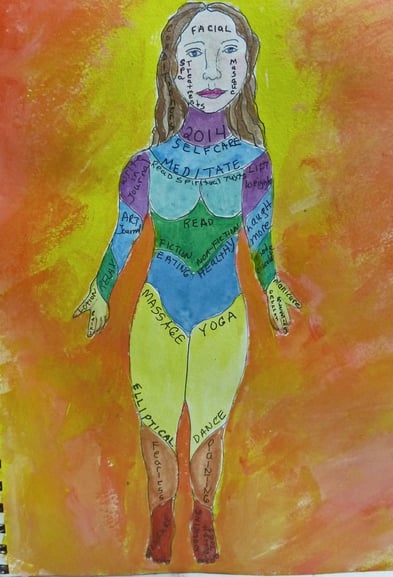
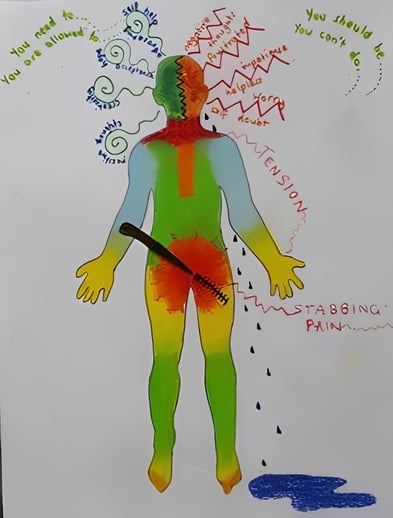
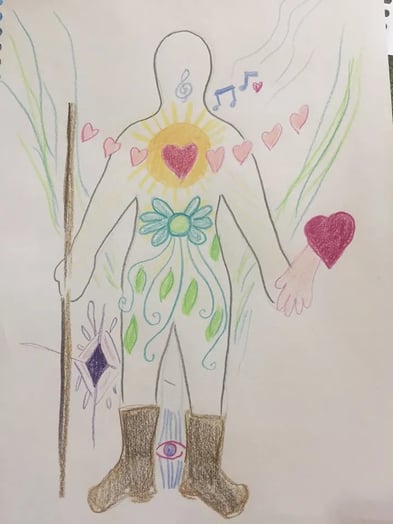
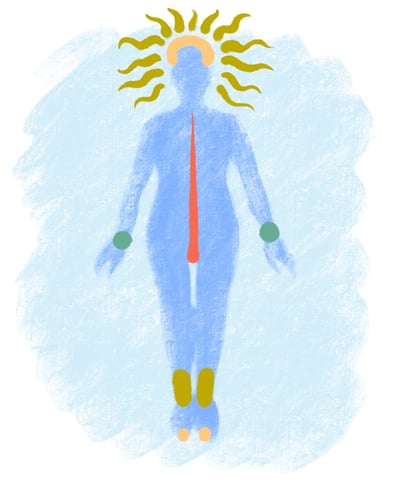
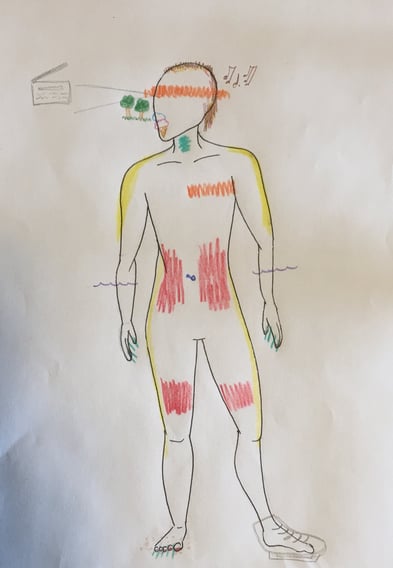
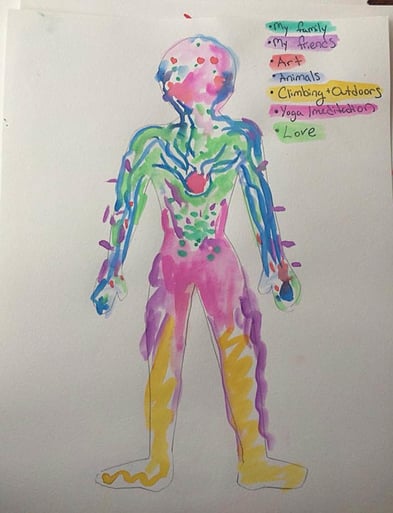
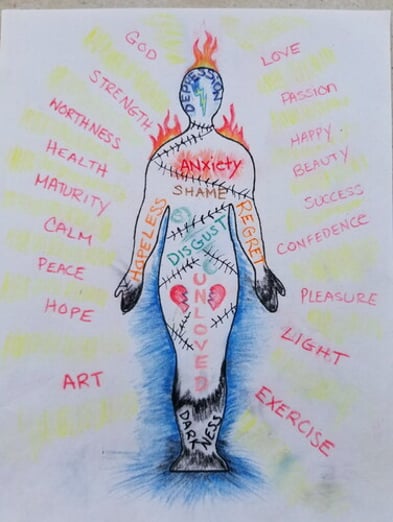
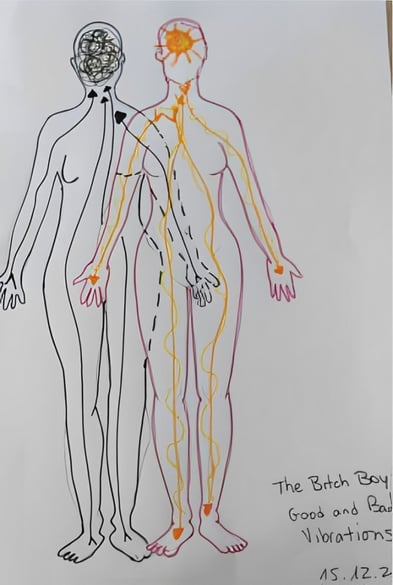








Personal Reflection
Prepare a Calm Space for Creative Exploration
Take a few moments to prepare a peaceful, nurturing space for yourself. You might begin by gently tidying the area and gathering any art supplies you’ll need. When you’re ready, light a candle or some incense to symbolize the start of this journey. If it feels soothing, put on some soft, relaxing music—acoustic, ambient, or nature-inspired sounds can help create a serene atmosphere. (If you’d like recommendations, consider exploring Yellow Brick Cinema on YouTube.) Let the gentle glow of the candle and the tranquil music guide you into a place of ease, inviting you to be fully present for this creative, healing session.
The Art of Living With Depression
Why is dealing with depression so difficult?
Depression drains your energy, hope, and drive, making it difficult to take the steps that will help you to feel better. Sometimes, just thinking about the things you should do to feel better, like exercising or spending time with friends, can seem exhausting or impossible to put into action.
It’s the Catch-22 of depression recovery: The things that help the most are the things that are the most difficult to do. There is a big difference, however, between something that’s difficult and something that’s impossible. While recovering from depression isn’t quick or easy, you do have more control than you realize—even if your depression is severe and stubbornly persistent. The key is to start small and build from there. You may not have much energy, but by drawing on all your reserves, you should have enough to take a walk around the block or pick up the phone to call a loved one, for example.
Taking the first step is always the hardest. But going for a walk or getting up and dancing to your favorite music, for example, is something you can do right now. And it can substantially boost your mood and energy for several hours—long enough to put a second recovery step into action, such as preparing a mood-boosting meal or arranging to meet an old friend. By taking the following small but positive steps day by day, you’ll soon lift the heavy fog of depression and find yourself feeling happier, healthier, and more hopeful again.
Tip 1: Reach out and stay connected
Getting support plays an essential role in overcoming depression. On your own, it can be difficult to maintain a healthy perspective and sustain the effort required to beat depression. At the same time, the very nature of depression makes it difficult to reach out for help. When you’re depressed, the tendency is to withdraw and isolate so that connecting to even close family members and friends can be tough.
You may feel too exhausted to talk, ashamed at your situation, or guilty for neglecting certain relationships. But this is just the depression talking. Staying connected to other people and taking part in social activities will make a world of difference in your mood and outlook. Reaching out is not a sign of weakness and it won’t mean you’re a burden to others. Your loved ones care about you and want to help. And if you don’t feel that you have anyone to turn to, it’s never too late to build new friendships and improve your support network.
How to reach out for depression support
Look for support from people who make you feel safe and cared for. The person you talk to doesn’t have to be able to fix you; they just need to be a good listener—someone who’ll listen attentively and compassionately without being distracted or judging you.
Make face-time a priority. Phone calls, social media, and texting are great ways to stay in touch, but they don’t replace good old-fashioned in-person quality time. The simple act of talking to someone face to face about how you feel can play a big role in relieving depression and keeping it away.
Try to keep up with social activities even if you don’t feel like it. Often when you’re depressed, it feels more comfortable to retreat into your shell, but being around other people will make you feel less depressed.
Find ways to support others. It’s nice to receive support, but research shows you get an even bigger mood boost from providing support yourself. So find ways—both big and small—to help others: volunteer, be a listening ear for a friend, do something nice for somebody.
Care for a pet. While nothing can replace the human connection, pets can bring joy and companionship into your life and help you feel less isolated. Caring for a pet can also get you outside of yourself and give you a sense of being needed—both powerful antidotes to depression.
Join a support group for depression. Being with others dealing with depression can go a long way in reducing your sense of isolation. You can also encourage each other, give and receive advice on how to cope, and share your experiences. If going to an in-person support group feels too difficult, some online therapy platforms offer virtual support groups.
10 tips for connecting with others
Talk to one person about your feelings.
Help someone else by volunteering.
Have lunch or coffee with a friend.
Ask a loved one to check in with you regularly.
Accompany someone to the movies, a concert, or a small get-together.
Call or email an old friend.
Go for a walk with a workout buddy.
Schedule a weekly dinner date.
Meet new people by taking a class or joining a club.
Confide in a clergy member, teacher, or sports coach.
Tip 2: Do things that make you feel good
In order to overcome depression, you have to do things that relax and energize you. This includes following a healthy lifestyle, learning how to better manage stress, setting limits on what you’re able to do, and scheduling fun activities into your day.
Do things you enjoy (or used to)
While you can’t force yourself to have fun or experience pleasure, you can push yourself to do things, even when you don’t feel like it. You might be surprised at how much better you feel once you’re out in the world. Even if your depression doesn’t lift immediately, you’ll gradually feel more upbeat and energetic as you make time for fun activities.
Pick up a former hobby or a sport you used to like. Express yourself creatively through music, art, or writing. Go out with friends. Take a day trip to a museum, the mountains, or the ballpark.
Manage stress
Not only does stress prolong and worsen depression, but it can also trigger it. Figure out all the things in your life that stress you out, such as work overload, money problems, or unsupportive relationships, and find ways to relieve the pressure and regain control.
Create a balanced schedule. It’s easy to fall into the trap of spending far more time working or completing chores than in making time for people and activities you enjoy. But to ease stress and avoid burnout, it’s important to find a healthy balance. Are there any responsibilities you can give up or delegate to others?
Practice relaxation techniques. A daily relaxation practice can help relieve symptoms of depression, reduce stress, and boost feelings of joy and well-being. Try yoga, deep breathing, progressive muscle relaxation, or meditation.
Practice gratitude. It sounds simplistic, but taking a few moments to consciously note the things you appreciate in your life can have a notable impact on your stress levels and mood. Even being grateful for the sun shining or a smile from a neighbor can help you keep things in perspective.
Develop a “wellness toolbox” to deal with depression
Come up with a list of things that you can do for a quick mood boost. The more “tools” for coping with depression you have, the better. Try and implement a few of these ideas each day, even if you’re feeling good.
Spend some time in nature.
List what you like about yourself.
Read a good book.
Watch a funny movie or TV show.
Take a long, hot bath.
Meditate.
Play with a pet.
Talk to friends or family face-to-face.
Listen to music.
Do something spontaneous and fun.
Tip 3: Get moving
When you’re depressed, just getting out of bed can seem like a daunting task, let alone working out! But exercise is a powerful depression fighter—and one of the most important tools in your recovery arsenal. Research shows that regular exercise can be as effective as medication for relieving depression symptoms. It also helps prevent relapse once you’re well.
To get the most benefit, aim for at least 30 minutes of exercise per day. This doesn’t have to be all at once—and it’s okay to start small. A 10-minute walk can improve your mood for two hours.
Exercise is something you can do right now to boost your mood
Your fatigue will improve if you stick with it. Starting to exercise can be difficult when you’re depressed and feeling exhausted. But research shows that your energy levels will improve if you keep with it. Exercise will help you to feel energized and less fatigued, not more.
Find exercises that are continuous and rhythmic. The most benefits for depression come from rhythmic exercise—such as walking, weight training, swimming, martial arts, or dancing—where you move both your arms and legs.
Add a mindfulness element, especially if your depression is rooted in unresolved trauma or fed by obsessive, negative thoughts. Focus on how your body feels as you move—such as the sensation of your feet hitting the ground, or the feeling of the wind on your skin, or the rhythm of your breathing.
Pair up with an exercise partner. Not only does working out with others enable you to spend time socializing, it can also help to keep you motivated. Try joining a running club, taking a water aerobics or dance class, seeking out tennis partners, or enrolling in a soccer or volleyball league.
Take a dog for a walk. If you don't own a dog, you can volunteer to walk homeless dogs for an animal shelter or rescue group. You’ll not only be helping yourself but also be helping to socialize and exercise the dogs, making them more adoptable.
Tip 4: Get a daily dose of sunlight
Sunlight can help boost serotonin levels and improve your mood. Whenever possible, get outside during daylight hours and expose yourself to the sun for at least 15 minutes a day. Remove sunglasses (but never stare directly at the sun) and use sunscreen as needed.
Take a walk on your lunch break, have your coffee outside, enjoy an al fresco meal, or spend time gardening.
Double up on the benefits of sunlight by exercising outside. Try hiking, walking in a local park, or playing golf or tennis with a friend.
Increase the amount of natural light in your home and workplace by opening blinds and drapes and sitting near windows.
If you live somewhere with little winter sunshine, try using a light therapy box.
Dealing with the winter blues
For some people, the reduced daylight hours of winter lead to a form of depression known as seasonal affective disorder (SAD). SAD can make you feel like a completely different person to who you are in the summer: hopeless, sad, tense, or stressed, with no interest in friends or activities you normally love. No matter how hopeless you feel, though, there are plenty of things you can do to keep your mood stable throughout the year.
Tip 5: Challenge negative thinking
Do you feel like you’re powerless or weak? That bad things happen and there’s not much you can do about it? That your situation is hopeless? Depression puts a negative spin on everything, including the way you see yourself and your expectations for the future.
When these types of thoughts overwhelm you, it’s important to remember that this is a symptom of your depression and these irrational, pessimistic attitudes—known as cognitive distortions—aren’t realistic. When you really examine them they don’t hold up. But even so, they can be tough to give up. You can’t break out of this pessimistic mind frame by telling yourself to “just think positive.” Often, it’s part of a lifelong pattern of thinking that’s become so automatic you’re not even completely aware of it. Rather, the trick is to identify the type of negative thoughts that are fueling your depression, and replace them with a more balanced way of thinking.
Negative, unrealistic ways of thinking that fuel depression
All-or-nothing thinking. Looking at things in black-or-white categories, with no middle ground (“If everything is not perfect, I’m a total failure.”)
Overgeneralization. Generalizing from a single negative experience, expecting it to hold true forever (“I had a bad date, I’ll never find anyone.”)
The mental filter – Ignoring positive events and focusing on the negative. Noticing the one thing that went wrong, rather than all the things that went right. (“I got the last question on the test wrong. I’m an idiot.”)
Diminishing the positive. Coming up with reasons why positive events don’t count (“She said she had a good time on our date, but I think she was just being nice.”)
Jumping to conclusions. Making negative interpretations without actual evidence. You act like a mind reader (“He must think I’m pathetic”) or a fortune teller (“I’ll be stuck in this dead-end job forever.”)
Emotional reasoning. Believing that the way you feel reflects reality (“I feel like such a loser. Everyone must be laughing at me!”)
‘Shoulds’ and ‘should-nots.’ Holding yourself to a strict list of what you should and shouldn’t do, and beating yourself up if you don’t live up to your rules. (“I should never have interviewed for that job. I’m an idiot for thinking I could get it.”)
Labeling. Classifying yourself based on mistakes and perceived shortcomings (“I’m a failure; an idiot; a loser.”)
How to challenge negative thinking
Keep a “negative thought log.” Whenever you experience a negative thought, jot it down on your phone or in a notebook—along with what triggered the negative thought. Once you identify the destructive thoughts patterns that contribute to your depression, you can start to challenge them. For example, if your significant other was short with you, you may have automatically assumed that the relationship was in trouble. However, a more realistic way to view it might be that your partner was just having a bad day.
Examine the evidence that your thoughts are true. When challenging your negative thoughts, ask yourself if there is any evidence that your thoughts or beliefs are not true? For example, if you’re thinking, “I’ll be stuck in this dead-end job forever,” how realistic is that expectation? Are there facts that you’re ignoring, such as the potential for sending out a resume and interviewing for another job? Is there another, more realistic way of looking at your situation?
Think outside yourself. Ask yourself, “Would I say what I’m thinking about myself to someone else?” If not, stop being so hard on yourself. Think about less harsh statements that offer more realistic descriptions. What would you tell a friend who had the same thought? Instead of labelling yourself a failure or a loser when something doesn’t go as planned, for example, look at things in a more realistic light: you made a mistake, but you can learn from it.
Allow yourself to be less than perfect. Many depressed people are perfectionists, holding themselves to impossibly high standards and then beating themselves up when they fail to meet them. Battle this source of self-imposed stress by challenging your negative ways of thinking. We all have bad days and life is often unexpectedly messy. Ask yourself, “How might I look at this situation if I didn’t have depression?”
Socialize with positive people. Notice how people who always look on the bright side deal with challenges, even minor ones, like not being able to find a parking space. Then consider how you would react in the same situation. Even if you have to pretend, try to adopt their optimism and persistence in the face of difficulty.
As you cross-examine your negative thoughts, you may be surprised at how quickly they crumble. In the process, you’ll develop a more balanced perspective and help to relieve your depression.
Tip 6: Support your health by eating and sleeping well
What you eat has a direct impact on the way you feel. Aim for a balanced diet with plenty of fruit and vegetables, and reduce your intake of food that can adversely affect your mood. This includes caffeine, alcohol, and processed food with high levels of chemical preservatives or hormones (found in some packaged food and cured meats).
Don’t skip meals. Going too long between meals can make you feel irritable and tired, so aim to eat something at least every three to four hours.
Minimize sugar and refined carbs. You may crave sugary snacks, baked goods, or comfort foods such as pasta or French fries, but these “feel-good” foods quickly lead to a crash in mood and energy. Aim to cut out as much of these foods as possible.
Boost your B vitamins. Deficiencies in B vitamins such as folic acid and B-12 can trigger depression. To get more, take a B-complex vitamin supplement or eat more citrus fruit, leafy greens, beans, chicken, and eggs.
Boost your mood with foods rich in omega-3 fatty acids. Omega-3 fatty acids play an essential role in stabilizing mood. The best sources are fatty fish such as salmon, herring, mackerel, anchovies, sardines, tuna, and some cold-water fish oil supplements.
Improve your sleep
Feeling tired can cause you to think irrationally, increase stress and anxious thoughts, and depress your mood.
Aim for 7-9 hours of sleep each night. Depression typically involves sleep problems; whether you’re sleeping too little or too much, your mood suffers.
Get on a better sleep schedule by learning healthy sleep habits. Try to go to sleep and get up at the same time every day, avoid bright screens within two hours of bedtime, develop a relaxing bedtime routine, and make sure your bedroom is cool, dark, and quiet.
Find healthy ways to get back to sleep. If you wake up in the night, keep the lights low, do a quiet, non-stimulating activity, such as reading a book, or practice a guided sleep meditation.
When to get professional help for depression
If you’ve taken self-help steps and made positive lifestyle changes and still find your depression getting worse, seek professional help. Needing additional help doesn’t mean you’re weak. Sometimes the negative thinking in depression can make you feel like you’re a lost cause, but depression can be treated and you can feel better!
Don’t forget about these self-help tips, though. Even if you’re receiving professional help, these tips can be part of your treatment plan, speeding your recovery and preventing depression from returning.
From: Coping with Depression
Articles
Videos
Continue Your Learning
Art Supplies
A variety of art supplies (depending on preference):
Paints (watercolours, acrylics)
Clay or modeling dough
Colored pencils, markers, or pens
Collage materials (magazines, glue, scissors)
Pastels or charcoal
Canvas, drawing paper, or any surface to work on
Creative Activities
Activity 1 - Exploring Emotional Weight
Step 1: Gather Your Art Supplies
Choose the materials that feel most comfortable for you. This might be pens, paints, collage materials (like magazine images or words), or simple drawing tools like pens and coloured pencils. The goal is to use whatever helps you express your emotions easily and freely.
Step 2: Reflecting on a Moment in Time
Take a few deep breaths and think about a time in your life or a specific event that feels connected to your depression. It might be a period in your life, such as your childhood, or a specific event, like a loss or a difficult change. Remember, you are not trying to figure out why it happened, but simply to connect with the emotions tied to that time.
What emotions come up as you reflect on this moment? These could be feelings you experienced at the time, or emotions you’re feeling now as you look back.
Step 3: Gently Express Your Emotions
Now, using your art supplies, begin to express those emotions. There’s no right or wrong way to do this—trust your instincts and let your feelings guide the process. Consider:
Colours: Which colours feel right for the emotions you are working with? For example, you might choose dark colors for sadness or bright colors for moments of hope.
Shapes and Lines: Are your emotions sharp or soft, heavy or light? How can you show that through shapes or lines in your artwork?
Images or Words: Do certain images or words come to mind as you think about these emotions? You can draw them or cut them out to include in your art.
Give yourself time to explore these emotions. You are simply giving them a voice through your creativity. This exercise can help you see your emotions as something outside of yourself—tied to experiences, but not who you are. Explore this process at your own pace, with self-compassion and patience.
Adapted from: Case Study: Using Art Therapy for a Client with Depression
After you finish your artwork, grab a pen and notebook and write down your answers to the following questions:
1) What emotions did you express through your art?
2) How did creating this artwork make you feel?
3) What do you notice when you look at your art now?
4) How did this process help you understand the connection between your emotions, your depression, and your past experiences?
Set an Intention
Before you begin, I invite you to close your eyes and take a few deep breaths. Let yourself be here right now in this moment. Turn your attention inwards, place your palms face down on the paper in front of you, and set an intention for this creative exercise. You may choose to say aloud or silently in your heart, "Today, I will deeply connect with my experience of depression, honoring it as part of my journey. Through creative expression, I will release what weighs me down and make space for healing, self-compassion, and new growth. My art will be a reflection of both the struggles I face and the resilience I carry within." Take a moment to give the paper gratitude for holding space for you today.
Personal Reflection
Introduction
This week, there are three art therapy activities available for you. You can choose to do any one of them, or if you're feeling up to it, explore all three. There's no rush—take your time and work through them at your own pace. Each activity is designed to help you connect with your emotions and gain new insights into your experience of depression.
Activity 2 - Imagining the Future
Step 1: Choose Your Focus
Take a moment to reflect on how you feel about the future. There are different ways to approach this exercise depending on what resonates with you right now. You can choose one of the following prompts:
"What do you expect your life to be like in 5 or 10 years from now?"
"What will your life be like when your depression is gone?"
Create a collage or vision board about your hopes and goals for the future.
Draw or paint a feeling you want to have more of in your life.
Create a symbol of hope.
Draw a bridge or path that represents your journey from now into the future.
Step 2: Gather Your Art Supplies
Choose the art materials that feel comfortable to you. This could be pens, markers, paint, or collage materials like magazines and glue. Feel free to use whatever helps you best express your thoughts and feelings.
Step 3: Express Your Future Vision
Once you've chosen your focus, start creating your artwork. There’s no right or wrong way to do this—let your imagination guide you. Think about:
Colours and Shapes: How can you use colour to represent your feelings about the future? Are there specific shapes or images that come to mind?
Words and Symbols: Are there any words or symbols that represent your hopes or feelings about what lies ahead?
Whether you feel hopeful, uncertain, or even hopeless about the future, allow yourself to express those feelings honestly. Your artwork is a safe space to explore whatever comes up.
Adapted from: Working with Depression - Art-based Approaches and Directives
Personal Reflection
After finishing your artwork, take a few moments to reflect on what you've created. Here are some questions to guide your reflection:
1) How do you feel about the future right now?
2) Did creating this artwork help you see any possibilities or hopes you hadn’t considered?
3) What emotions came up during the process?
4) What would you like to move toward in the future?
5) If you expressed a feeling or symbol of hope, what does it represent for you? If you feel uncertain or hopeless, what small step might help you connect with hope again?
6) How does this vision of the future compare to how you feel right now? Did this exercise change how you see your current experience in any way?
Activity 3 - Externalizing Your Depression
Step 1: Draw Your Depression
Using any art materials you like, take a moment to think about what depression looks like for you. Then, begin to draw it. Consider these questions as you create your image:
What colour is it?
How big or small is it compared to you?
What shape is it?
How far away or close to your body is it?
Where does it live in your body?
What texture does it have (rough, smooth, soft, hard)?
Don't worry about making the art look perfect. Your drawing is just a reflection of how you experience depression right now.
Step 2: Give It a Name
Now that you’ve drawn depression, give it a name. You could choose a name that reflects how it feels to you, like "Sadness," "The Cloud," or "The Black Dog." Or, you might choose a regular name, like "Roger" or "Amy," to make it feel more separate from you. By giving your depression a name, you begin to see it as something separate from yourself. This can help you understand and observe it more clearly, creating distance between you and the emotions you're experiencing.
Step 3: Have a Conversation with Your Depression
Imagine you could have a conversation with your drawing of depression. Picture it as a creature, a monster, or even a person. Then, ask yourself:
What would you say to it?
What do you think it would say back?
How does it interact with you? Is it comforting or threatening? Close or distant?
What does it seek or need from you?
This exercise helps you visualize depression as something separate from who you are, giving you the space to explore your relationship with it in a new way. You can revisit this conversation with depression over time as your feelings evolve.
Adapted from: An Art Activity for Depression
Personal Reflection
After you finish your artwork, grab a pen and notebook and write down your answers to the following questions:
1) What did it feel like to draw depression? Did the act of creating it make it feel more or less intense?
2) What would you say to depression, now that it has a form?
3) Is there something you wish it understood about you? What would you like to tell it?
4) What do you think depression would say back to you? If it could speak, would it be helpful or harmful?
5) What insights does this give you about how you experience depression?
6) Does externalizing depression in this way change how you feel about it? Do you feel more in control, more distant, or more able to cope with it?

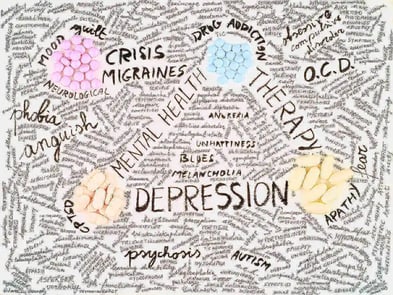




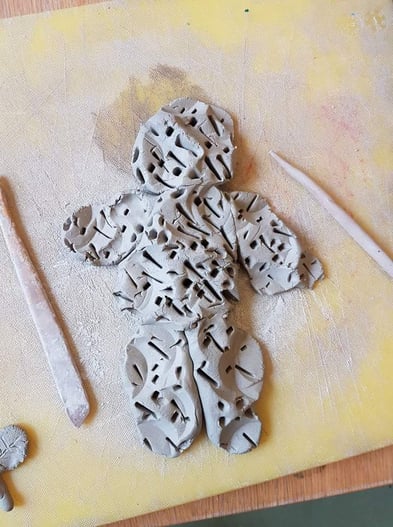















Prepare a Calm Space for Creative Exploration
Take a few moments to prepare a peaceful, nurturing space for yourself. You might begin by gently tidying the area and gathering any art supplies you’ll need. When you’re ready, light a candle or some incense to symbolize the start of this journey. If it feels soothing, put on some soft, relaxing music—acoustic, ambient, or nature-inspired sounds can help create a serene atmosphere. (If you’d like recommendations, consider exploring Yellow Brick Cinema on YouTube.) Let the gentle glow of the candle and the tranquil music guide you into a place of ease, inviting you to be fully present for this creative, healing session.
The Art of Strength
What are your strengths?
Many of us may have seldom considered this question. Sure, you might love drawing, your friends might laugh at your jokes, and you might have an impressive collection of thank-you notes to your name. But you haven’t thought of creativity, humour, and kindness as your strengths, per se – more as the everyday ingredients that make up who you are.
What if we adopted a more intentional approach to the things that we are good at, the things that energize us, motivate us, ignite our curiosity and passion? What if, instead of taking our extra-ordinary ingredients for granted, we celebrate them, nurture them, and use them as powerful catalysts for our well-being?
For psychologist Lea Waters, the magic of the strength-based approach lies in its paradigm-shifting capacities – focusing our attention first on the positive qualities of an individual, before considering their flaws and weaknesses. While her extensive research on strength-based parenting has yielded hopeful results (for example, happier parents and less stressed kids), the philosophy of the “strength switch” can bear positive consequences in different areas of life. “Once you train your brain to start seeing the strengths in your children, it spills over to your intimate relationships, your friendships, and your workplace,” she explains.
Here is Waters on the what (what it looks like), why (why it works), and how (how to do it) of the strength-based approach in parenting, work, relationships, and self-actualization.
Parenting
What:
To counteract our negativity bias of getting hung up on weaknesses, Dr. Waters suggests to “train yourself to intentionally look for the positive opposite of what you are trying to fix.” For example, if you are trying to teach your child to be less messy, look for the things they do keep tidy. If you are trying to change their study habits, focus on the 40 minutes of the hour they did put in, instead of nagging about the 20 minutes they missed. Acknowledge their efforts. Tell them you are proud of what they are already doing right. Then, next time, work on extending the diameter of their cleanliness and diligence.
If there is a weakness that your child wishes to correct – let’s say lacking confidence to make friends at a new school – again, “bring strength into that fold,” suggests Dr. Waters. Talk together about the times when they were successful in making friends. What strengths helped them then? “By drawing out your child’s positive qualities, you are connecting them with their internal assets. This, in turn, will help them in the new school, as they’ll find themselves thinking, OK, I am a bit nervous, but I can use my curiosity to ask questions, I can use my kindness to show interest in people, I can use my social intelligence to know when to stand back and observe and when to step forward,” says Dr. Waters. Besides, a strength talk will likely achieve more effective results than nagging ever could.
Why:
Intrapersonal outcome: a holistic view of self, increased self-awareness, and self-esteem
“A strength-based approach helps the child to define themselves by what they are and what is present in them, rather than what they aren’t and what is lacking,” explains Dr. Waters. It generates self-confidence and self-awareness. Children gain a broader understanding of who they are – their strengths and their weaknesses. As a result, they become less defensive when confronting their challenges. (Yes, I am a bit impatient or not very tidy. But it doesn’t define me.)
Interpersonal outcome: better parent-child relationships
“When parents incorporate a strength-based approach, children feel like their parents love them, are seeing the best in them, and are in their corner. If instead of criticism and nagging about what needs work, the child hears from her parent I see your humor, I see your kindness, I see your strategic thinking, this helps create a solid foundation of a safely attached, positively bonded relationship. As research shows, these primary attachments go on to shape future attachment styles in friendships, intimate and work relationships. This is why a secure attachment is an enduring gift that you end up giving to your child,” explains Dr. Waters.
How:
Become a strength detective. “For the next week, observe your child’s behavior and tune in when you see a strength – humor, kindness, curiosity, even being great with animals, technology, or decorating their room. There are hundreds of different ways in which kids express their strengths.”
Write a strength letter to your child. “It might end up as a precious resource for your child to go back to, whenever they need an extra boost.”
Work
What:
Research shows that organizations that incorporate the strength-based approach can enhance the well-being of their employees. “When you craft roles and projects based on the employee’s inherent strengths, the better they will perform, and the more energized and self-motivated they will be,” says Dr. Waters. Moreover, if employees feel like their employer believes in them, appreciates their strengths and is there to help them polish the areas that need more work, they will be less likely to view addressing their weaknesses as criticism.
Why:
Everyone wants to feel like their contributions are valid. A strength-based approach allows people to be seen and validated in a workplace, “shifting the dynamic from compliance to collaboration,” explains Dr. Waters.
How:
Strength spotting. Spot employee strengths with team exercises.
Surveys. Fill out work-oriented strength-based surveys.
Offer praise. Not empty praise. Instead, strength-specific praise, where you acknowledge the individual’s strength and its positive outcome (I saw you use your diplomacy in that meeting, which helped the meeting go well).
Relationships
What:
Research shows that feeling appreciated in a relationship is a significant predictor of whether the relationship endures. Over time, we can start taking our partners for granted. “When we intentionally train ourselves to see our partner’s strengths and to place attention on their good qualities, we begin to see them with new eyes. It takes away from our partner becoming invisible, keeps the relationship engaged, and creates a mutual regard between partners,” explains Dr. Waters.
Why:
Lack of recognition and appreciation is one reason why relationships fail. A strength-based relationship helps partners feel seen and appreciated.
How:
Step back and look at your partner with fresh eyes. Remind yourself of their strengths.
Express gratitude for the small things (doing household chores; showing support).
Incorporate your appreciation of the strengths they bring to your relationships into family milestones, birthdays, or holidays. Write a letter, raise a toast, create a collage of memories.
Self-actualization
What:
Thanks to our negativity bias, we are pretty good at picking out our faults. “Give yourself permission to think well of yourself,” says Dr. Waters. “It doesn’t mean that you are being egotistical – owning your strengths can come with being humble.”
Why:
“Similar to the oxygen mask analogy, when we own our strengths, we can be best for others. A part of self-actualization is moving out of ego and fear-focused states towards becoming more other-focused. We realize that we are part of a big picture and that we can contribute. This, in turn, gives us meaning and purpose. Ultimately, self-actualization comes back to understanding that we are here to figure out who we are so we can help others. It’s hard to do that if you are only focusing on what is wrong with you,” says Waters.
How:
To (re)discover your strengths, tune in to yourself (or take a strengths survey). What gives you energy? What are you self-motivated to do? When do you lose track of time?
Plan your perfect week. What would you choose to do without your daily obligations? Step back and see what you chose and why. What inherent strengths are underneath your choices? Creativity? Social skills? Planning skills?
Design a passion project based on your strengths.
Finally, ask yourself how you can use these strengths – these invaluable tools that have guided, lifted, saved you along your path, these extraordinary ingredients that make you you – to give back to the world?
For in using your gifts in service of others, you can grow the joy and meaning that your strengths have brought to your own life.
Articles
Videos
The Test that Reveals Your Hidden Strengths | Laurie Santos (7 minutes)
How Our Weaknesses Can Become Our Strengths | David Rendall | TEDxZurich (11 minutes)
How To Know Yourself (6 minutes)
Mind Matters | Personal Strengths (3 minutes)
Continue Your Learning
Art Supplies
A variety of creative supplies (depending on preference)
Paints (watercolours, acrylics)
Clay or modeling dough
Coloured pencils, markers, or pens
Collage materials (magazines, glue, scissors)
Pastels or charcoal
Canvas, drawing paper, or any surface to work on
Creative Activity
Directions
Part 1: Identify and Represent a Personal Strength
1. Reflect on the personal strengths you possess, or take the VIA Character Strengths Survey to help identify your strengths. For inspiration, you can also explore this list of 90 character strengths.
2. Choose one strength that feels most significant or resonates deeply with you.
3. Create a visual representation of this strength:
- Use any medium or combination of materials.
- Focus on using colours, shapes, symbols, or textures that express what this strength means to you.
- Allow your inner feelings about the strength to guide your creative choices.
Part 2: Growing Your Strength
1. Envision what your chosen strength might look like in 6 months, 1 year, or even longer if you actively nurture and develop it.
2. Consider the following:
- How will this strength evolve over time?
- What actions or behaviours will help it grow?
3. Create an artwork that represents the future state of your strength:
- Use new elements like different colours, symbols, or lines to symbolize this transformation.
- Let the artwork reflect not just what the strength is now but its potential future.
- As you work, reflect on what you can do to actively enhance this strength.
After you finish your artwork, grab a pen and notebook and write down your answers to the following questions:
1) Which strength did you choose, and why?
2) How does this strength show up in your life currently?
3) How did you decide on the colors, shapes, or materials you used? What do they represent?
4) How do you envision this strength growing in the future?
5) What actions or habits can you incorporate into your life to nurture it?
6) What did the process of creating this future-focused artwork teach you about the potential of your strengths?
Set an Intention
Before you begin, I invite you to close your eyes and take a few deep breaths. Let yourself be here right now in this moment. Turn your attention inwards, place your palms face down on the paper in front of you, and set an intention for this creative exercise. You may choose to say aloud or silently in your heart, "Today, I will uncover and embrace my unique strengths, acknowledging the qualities that make me resilient, capable, and whole. Through reflection and creativity, I will learn to celebrate and trust in my abilities, using them to support and enrich my life." Take a moment to give the paper gratitude for holding space for you today.


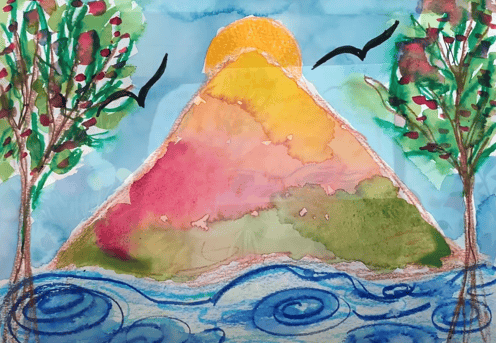

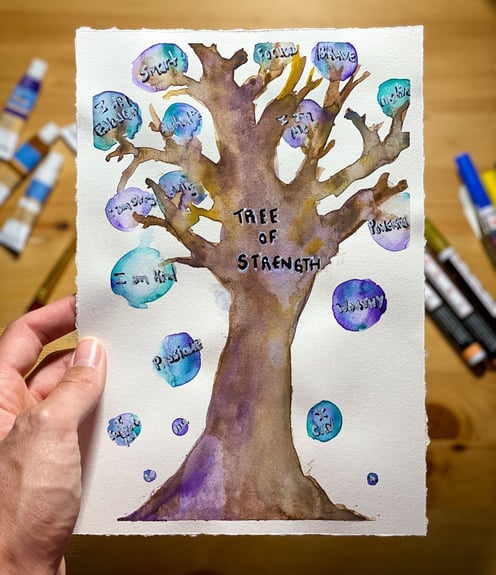

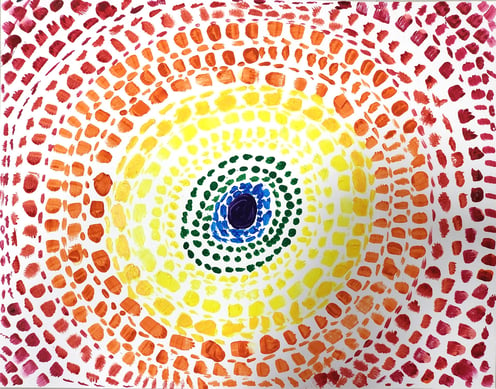











Personal Reflection
Prepare a Calm Space for Creative Exploration
Take a few moments to prepare a peaceful, nurturing space for yourself. You might begin by gently tidying the area and gathering any art supplies you’ll need. When you’re ready, light a candle or some incense to symbolize the start of this journey. If it feels soothing, put on some soft, relaxing music—acoustic, ambient, or nature-inspired sounds can help create a serene atmosphere. (If you’d like recommendations, consider exploring Yellow Brick Cinema on YouTube.) Let the gentle glow of the candle and the tranquil music guide you into a place of ease, inviting you to be fully present for this creative, healing session.
The Art of Narrative Therapy
Most everyone has stories that they tell about themselves, either consciously or unconsciously. Life experiences don’t often happen in a vacuum — human beings tend to process these events and give them meaning through the lens of what they already believe.
Narrative therapy seeks to help you become aware of the stories you carry with you through life and how these stories can influence the way you view yourself. It can empower you to take back your narrative and see any problems as distinct from you.
This process is sometimes known as re-authoring.
Narrative therapy aims to harness a person’s natural storytelling tendencies to improve their psychological well-being. There are various approaches in narrative therapy, which are:
specific to the individual’s needs
respectful
non-blaming
non-pathologizing
What is Narrative Therapy?
First developed in the 1980s, narrative therapy is a form of psychotherapy based on the idea that a person’s identity and self-perception are made up of a huge number of connected narratives. Some of these stories may be helpful and others unhelpful — but they can all have a profound impact on your mental health and relationships.
Narrative therapy focuses on giving people the tools to re-author their narrative in a more balanced and compassionate way.
This usually starts with becoming aware of the stories you’ve absorbed and developed from:
personal experiences
social and political pressures
cultural or religious beliefs
pop culture
media, books, and advertising
Once you can understand and express these stories, you can start to reframe, question, and even change them.
When is Narrative Therapy Used?
Narrative therapy can be used in several different situations. It may benefit individuals, couples, and families.
Possible Situations
Let’s say a person comes to therapy because they’re experiencing anxiety about their performance at work. A mental health professional can use narrative therapy to help that person identify the stories they’ve internalized about their:
abilities
prospects
beliefs on what success should look like
These stories could be rooted in:
their upbringing
their experiences at school
their cultural or religious beliefs
many other external factors
Or a couple may seek therapy because they can’t stop arguing. In this instance, narrative therapy could help each person to externalize the problems in the relationship and see them as distinct from their partner.
Narrative therapy can create space for more helpful communication by encouraging partners or family members to reframe a fight as an “us vs. the problem,” rather than a “me vs. you” narrative.
Conditions
Depression is one example of a condition that may respond well to narrative therapy. Symptoms of depression that can sometimes be rooted in unhelpful stories include feelings of worthlessness, negative self-talk, and excessive guilt.
Research from 2015 indicates that narrative therapy can help people with depression emphasize positive experiences and develop kinder, more affirming stories about themselves.
Narrative Therapy Techniques
There are many techniques that can be used within narrative therapy. Here are just a few of the most common.
Storytelling
Storytelling is a fundamental technique in narrative therapy. A therapist can help you put together your personal narrative in your own words by asking questions that encourage reflection and sharing. During this process, they can also help you reframe and explore alternative interpretations of your experiences.
Externalization
Another key technique is externalization, or speaking about a story or problem as distinct from the individual. This technique allows you to observe yourself in a more objective way, which can help you see that you are capable of change.
Externalization has also been shown to be useful in family therapy, when parents are encouraged to identify specific concerns within a child’s behavior, rather than viewing the child as the problem.
Identifying Alternatives
This technique involves working with a therapist to pinpoint times when a story wasn’t completely accurate or when there were exceptions to a problem.
For example, if a person has the belief that they don’t fit in or are bad at making friends, narrative therapy could encourage them to identify times when the opposite was true.
Relative influence questioning
With relative influence questioning, your therapist helps you in mapping out your relationship with a given problem.
This is usually done using two sets of questions: the first set addresses how much influence the problem has on the person, while the second set addresses how much influence the person can have on the problem.
The goal of relative influence questioning is to empower you to exert agency in your life.
Goals of Narrative Therapy
Forming a collaborative relationship with your therapist and creating a safe space so you can explore your stories is one of the main goals of narrative therapy.
With narrative therapy, it’s important that your therapist encourages you to find your voice and tell your story in your own words, rather than speaking for you.
Seeing yourself as distinct from the challenges you are facing is another key factor.
Social worker Michael White and anthropologist David Epson, who pioneered narrative therapy, suggest that this internal shift is what creates the opportunity for change, according to a research review from 2000.
Narrative therapy also aims to help you question assumptions you may have about your life and instead consider alternatives you may have overlooked. These alternative storylines and interpretations are often more helpful and nonjudgmental, and they allow room for a more balanced vision of the future.
Limitations of Narrative Therapy
Since narrative therapy is a relatively new form of therapy — only around 40 years old — research on its usefulness is currently limited.
The research that does exist indicates that narrative therapy can be effective for many conditions and situations, including depression, chronic pain, grief, post-traumatic stress disorder (PTSD), eating disorders, conduct disorders, and parent-child conflict.
However, the limits of this research make it hard to draw broad conclusions about how effective narrative therapy really is.
Another criticism of narrative therapy is that it involves complex terms and concepts, many of which are unique to this model. This could create a barrier to entry for some people, who may find it overwhelming or intimidating.
Let’s Recap
Narrative therapy is a non-pathologizing, person-first therapeutic approach that focuses on the stories people often develop and carry throughout life. This form of therapy also helps people view themselves as separate from their concerns.
In narrative therapy, a person is encouraged to become aware of the stories they’ve absorbed about their own life and externalize those narratives alongside any problems they’re experiencing.
The goal is to reframe and question assumptions about yourself and in some cases, replace existing stories with more helpful alternatives.
Narrative therapy can be useful for individuals, couples, and families. While the scope of research into its impact is limited, existing studies suggest that it is helpful for certain situations and conditions.
If you think narrative therapy may be a good fit for you, check out Psych Central’s guide to finding a therapist.
Many therapists practice narrative therapy along with other models, so you can work with your therapist to find the best approach for your individual needs.
From: Rewriting Your Life Story: All About Narrative Therapy
Articles
How to Rewrite Your Own Story – Lessons From Narrative Therapy
The Tree of Life: A Simple Exercise for Reclaiming Your Identity and Direction in Life Through Story
Videos
Narrative Therapy (8 minutes)
6 Ways to Process Your Feelings in Writing: How to Journal for Anxiety and Depression (10 minutes)
The Timeline Activity (9 minutes)
Narrative Therapy with Dr. Diane Gehart (1 hour 16 minutes)
Continue Your Learning
Supplies
Paper or notebook
Pen or pencil
Narrative Activity
Directions
This self-guided lesson takes a different approach from previous ones. You'll be diving into two narrative therapy exercises, allowing space for reflection and self-exploration. Art and creativity will take a step back this week to make room for some deeper personal storytelling. You can complete both parts of the exercise or focus on the one that resonates with you most.
Part 1: Write a Letter to Your Past Self
Begin by recalling a past experience that feels unresolved and continues to impact your life. Write the facts of the event, including your age at the time, what happened, and who was involved. Describe how this experience continues to impact your life. You may choose to use point form for this part of the activity.
Now write a letter to your past self about this unresolved experience. Address your past self as “you,” be as honest as possible, and don’t worry about spelling or grammar. Here are some guiding questions to help you get started:
Tell your past self any relevant insights you now have about the struggle or experience.
Offer forgiveness and compassion to your younger self.
Mention anything else you feel is important to promote healing and closure.
Describe any lessons have you gained since that time that your younger self might not have been aware of.
Part 2: Write a Letter to Your Future Self
Take a few minutes to consider what you hope for your life in 10 or 20 years. Write your letter as if you are writing to your best friend – this is just for you, so there’s no need to be too formal. Ask yourself the following questions, and use them to guide your letter:
How old will I be? Do I have an idea of what I will have accomplished, personally or professionally, by that age?
Where will I be living? Where will my friends and family be? What will I be doing?
How will I have changed for the better? How will I have grown as a person?
How will I have stayed the same? What will I still love doing?
What will I wish I had appreciated more when I was younger? What will I wish I had spent less time worrying about?
What will my philosophy toward life be? What will I be most proud of?
From: Letter to My Past Self & Journaling Exercise: Write A Letter to Your Future Self
After you finish writing your letters, grab a pen and a journal or notebook and write down your answers to the following questions:
1) Did the exercise change your perspective on the past?
2) Did the exercise change your perspective on the present or the future?
3) What did it reveal about your values or priorities?
4) How did the process of writing help you connect with different versions of yourself?
5) Did anything unexpected surface while doing these exercises? If so, what stood out?
Set an Intention
Before you begin, I invite you to close your eyes and take a few deep breaths. Let yourself be here right now in this moment. Turn your attention inwards, place your palms face down on the paper in front of you, and set an intention for this exercise. You may choose to say aloud or silently in your heart, "With a reflective heart and open mind, I explore the stories that have shaped me. Through writing to my past and future self, I embrace growth, healing, and the unfolding of my journey." Take a moment to give the paper gratitude for holding space for you today.

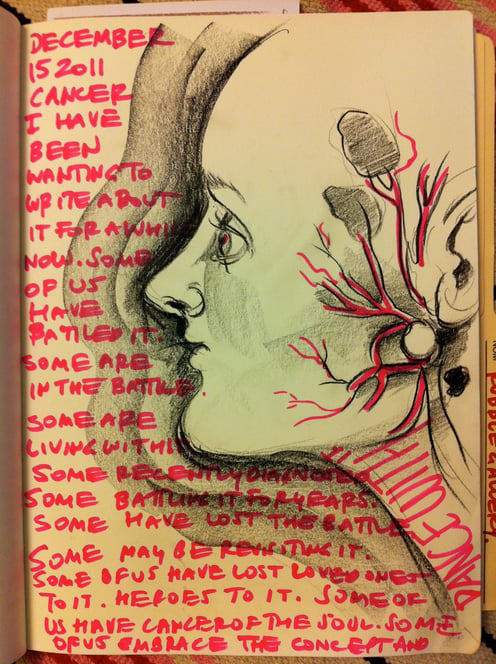


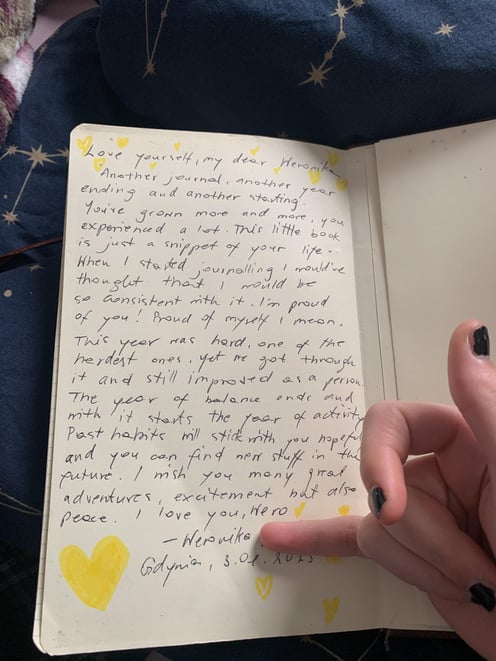
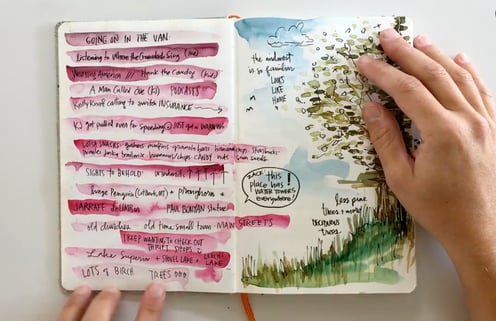
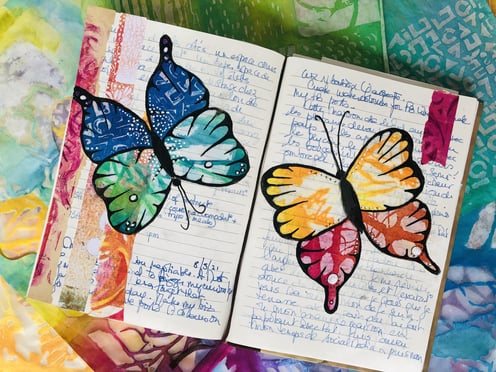









Personal Reflection
Prepare a Calm Space for Creative Exploration
Take a few moments to prepare a peaceful, nurturing space for yourself. You might begin by gently tidying the area and gathering any supplies you’ll need. When you’re ready, light a candle or some incense to symbolize the start of this journey. If it feels soothing, put on some soft, relaxing music—acoustic, ambient, or nature-inspired sounds can help create a serene atmosphere. (If you’d like recommendations, consider exploring Yellow Brick Cinema on YouTube.) Let the gentle glow of the candle and the tranquil music guide you into a place of ease, inviting you to be fully present for this creative, healing session.
The Art of Nature
Be honest: How much time do you spend staring at a screen each day? For most Americans, that number clocks in at more than 10 hours, according to a 2016 Nielsen Total Audience Report. Our increasing reliance on technology, combined with a global trend toward urban living, means many of us are spending ever less time outdoors—even as scientists compile evidence of the value of getting out into the natural world.
From a stroll through a city park to a day spent hiking in the wilderness, exposure to nature has been linked to a host of benefits, including improved attention, lower stress, better mood, reduced risk of psychiatric disorders and even upticks in empathy and cooperation. Most research so far has focused on green spaces such as parks and forests, and researchers are now also beginning to study the benefits of blue spaces, places with river and ocean views. But nature comes in all shapes and sizes, and psychological research is still fine-tuning our understanding of its potential benefits. In the process, scientists are charting a course for policymakers and the public to better tap into the healing powers of Mother Nature.
“There is mounting evidence, from dozens and dozens of researchers, that nature has benefits for both physical and psychological human wellbeing,” says Lisa Nisbet, PhD, a psychologist at Trent University in Ontario, Canada, who studies connectedness to nature. “You can boost your mood just by walking in nature, even in urban nature. And the sense of connection you have with the natural world seems to contribute to happiness even when you’re not physically immersed in nature.”
Cognitive Benefits
Spending time in nature can act as a balm for our busy brains. Both correlational and experimental research have shown that interacting with nature has cognitive benefits—a topic University of Chicago psychologist Marc Berman, PhD, and his student Kathryn Schertz explored in a 2019 review. They reported, for instance, that green spaces near schools promote cognitive development in children and green views near children’s homes promote self-control behaviors. Adults assigned to public housing units in neighborhoods with more green space showed better attentional functioning than those assigned to units with less access to natural environments. And experiments have found that being exposed to natural environments improves working memory, cognitive flexibility and attentional control, while exposure to urban environments is linked to attention deficits (Current Directions in Psychological Science, Vol. 28, No. 5, 2019).
Researchers have proposed a number of ideas to explain such findings, as Nisbet and colleagues described in a review of the benefits of connection with nature (Capaldi, C.A., et al., International Journal of Wellbeing, Vol. 5, No. 4, 2015). The biophilia hypothesis argues that since our ancestors evolved in wild settings and relied on the environment for survival, we have an innate drive to connect with nature. The stress reduction hypothesis posits that spending time in nature triggers a physiological response that lowers stress levels. A third idea, attention restoration theory, holds that nature replenishes one’s cognitive resources, restoring the ability to concentrate and pay attention.
The truth may be a combination of factors. “Stress reduction and attention restoration are related,” Nisbet points out. “And because of the societal problems we’re dealing with in terms of stress, both of these theories have gotten a lot of attention from researchers.”
Experimental findings show how impressive nature’s healing powers can be—just a few moments of green can perk up a tired brain. In one example, Australian researchers asked students to engage in a dull, attention-draining task in which they pressed a computer key when certain numbers flashed on a screen. Students who looked out at a flowering green roof for 40 seconds midway through the task made significantly fewer mistakes than students who paused for 40 seconds to gaze at a concrete rooftop (Lee, K.E., et al., Journal of Environmental Psychology, Vol. 42, No. 1, 2015).
Even the sounds of nature may be recuperative. Berman and colleagues found that study participants who listened to nature sounds like crickets chirping and waves crashing performed better on demanding cognitive tests than those who listened to urban sounds like traffic and the clatter of a busy café (Van Hedger, S.C., et. al., Psychonomic Bulletin & Review, Vol. 26, No. 2, 2019).
Nature and Happiness
While such laboratory experiments are intriguing, they don’t fully capture the diverse benefits that go hand in hand with time spent in the outdoor world, says Cynthia Frantz, PhD, a professor of psychology and environmental studies at Oberlin College in Ohio. “Spending time in nature has cognitive benefits, but it also has emotional and existential benefits that go beyond just being able to solve arithmetic problems more quickly,” she notes.
In a review of the research, Gregory Bratman, PhD, an assistant professor at the University of Washington, and colleagues shared evidence that contact with nature is associated with increases in happiness, subjective well-being, positive affect, positive social interactions and a sense of meaning and purpose in life, as well as decreases in mental distress (Science Advances, Vol. 5, No. 7, 2019).
Other work suggests that when children get outside, it leaves a lasting impression. In a study of residents of Denmark, researchers used satellite data to assess people’s exposure to green space from birth to age 10, which they compared with longitudinal data on individual mental health outcomes. The researchers examined data from more than 900,000 residents born between 1985 and 2003. They found that children who lived in neighborhoods with more green space had a reduced risk of many psychiatric disorders later in life, including depression, mood disorders, schizophrenia, eating disorders and substance use disorder. For those with the lowest levels of green space exposure during childhood, the risk of developing mental illness was 55% higher than for those who grew up with abundant green space (Engemann, K., et al., PNAS, Vol. 116, No. 11, 2019).
There is even evidence that images of nature can be beneficial. Frantz and colleagues compared outcomes of people who walked outside in either natural or urban settings with those of people who watched videos of those settings. They found that any exposure to nature—in person or via video—led to improvements in attention, positive emotions and the ability to reflect on a life problem. But the effects were stronger among those who actually spent time outside (Mayer, F.S., et al., Environment and Behavior, Vol. 41, No. 5, 2009).
More recently, scientists have begun exploring whether virtual reality nature experiences are beneficial. In a review of this work, Mathew White, PhD, an environmental psychologist at the University of Exeter in England, and colleagues concluded that while the real deal is best, virtual reality can be a worthwhile substitute for people who are unable to get outdoors, such as those with mobility problems or illness (Neuropsychiatric Disease and Treatment, Vol. 14, 2018).
Nature might also make us nicer—to other people as well as to the planet. John Zelenski, PhD, a professor of psychology at Carleton University in Ontario, Canada, and colleagues showed undergraduates either nature documentaries or videos about architectural landmarks. Then the participants played a fishing game in which they made decisions about how many fish to harvest across multiple seasons. Those who had watched the nature video were more likely to cooperate with other players, and also more likely to make choices that would sustain the fish population (Journal of Environmental Psychology, Vol. 42, No. 1, 2015). In another experiment, Zelenski and his colleagues found that elementary school children acted more prosocially to classmates and strangers after a field trip to a nature school than they did after a visit to an aviation museum (Dopko, R.L., et al., Journal of Environmental Psychology, Vol. 63, No. 1, 2019).
Those generous behaviors weren’t attributed to students’ moods, Zelenski and his colleagues found, so it wasn’t simply that spending time in nature made them happier and therefore more giving. Another plausible (though unproven) explanation is the emotion of awe. “There are some hints that awe is associated with generosity, and nature can be a way to induce awe,” he says. “One of the things that may come from awe is the feeling that the individual is part of a much bigger whole.”
Experience vs. Connection
With so many benefits linked to nature, people naturally wonder: How much time outside is enough? White and colleagues took a stab at answering that question by studying a representative sample of nearly 20,000 adults across the United Kingdom. They found people who had spent at least two recreational hours in nature during the previous week reported significantly greater health and well-being. That pattern held true across subgroups including older adults and people with chronic health problems, and the effects were the same whether they got their dose of nature in a single 120-minute session or spread out over the course of the week (Scientific Reports, Vol. 9, No. 1, 2019). “We’re not saying we’ve cracked this nut yet, but this is a first step toward making specific recommendations about how much time in nature is enough,” White says.
The amount of time one spends in nature isn’t the only element to consider—it’s also beneficial to feel connected to the natural world even when you’re stuck at a desk. Researchers call this feeling by a variety of names, including nature relatedness, connectedness to nature and inclusion of nature in self, and they’ve developed a number of scales to measure the trait.
Whatever you call it, connectedness to nature seems to benefit mood and mental health. In a meta-analysis, Alison Pritchard, PhD, ABPP, at the University of Derby in England, and colleagues found that people who feel more connected to nature have greater eudaimonic well-being—a type of contentment that goes beyond just feeling good and includes having meaningful purpose in life (Journal of Happiness Studies, online first publication, 2019).
Zelenski and Nisbet studied whether connection itself is the magic ingredient. They assessed the overlap between connectedness with nature and a general sense of connectedness, such as feeling in tune with one’s friends or community. They found that feeling connected to nature was a significant predictor of happiness even after controlling for the effects of general connectedness (Environment and Behavior, Vol. 46, No. 1, 2014). “People who feel that their self-concept is intertwined with nature report being a bit happier,” says Zelenski. “Nature connectedness isn’t the biggest predictor of happiness, but [the association between the two] is quite consistent.”
In fact, nature might help to buffer the effects of loneliness or social isolation. White and his colleagues surveyed 359 U.K. residents about their social connectedness and proximity to nature over the previous week. Social isolation is typically associated with worse subjective well-being. But the researchers found that when people with low social connectedness had high levels of nearby nature, they reported high levels of wellbeing (Cartwright, B.D.S., et al., International Journal of Environmental Research and Public Health, Vol. 15, No. 6, 2018). “There are people who don’t necessarily want to spend their time with others, but they feel connected to the natural environment, and that can enhance their well-being,” White says.
Green and Blue Spaces
It’s clear that getting outside is good for us. Now, scientists are working to determine what types of environments are best. Much attention has gone to green spaces, but White has studied a variety of marine and freshwater environments and found these blue spaces are also good for well-being (Gascon, M., et al., International Journal of Hygiene and Environmental Health, Vol. 220, No. 8, 2017.) In fact, he says, they may even be slightly more restorative than green spaces.
There may also be value in trekking to remote locations. In a survey of 4,515 U.K. residents, White found that people reported more connection to nature and felt more restored after visiting rural and coastal locations than they did after spending time in urban green spaces. Areas deemed to be “high environmental quality”—such as nature reserves and protected habitats—were also more beneficial than areas with low biodiversity (Wyles, K.J., et al., Environment and Behavior, Vol. 51, No. 2, 2019). In other work, White and his colleagues found that people who watched nature videos with a diverse mix of flora and fauna reported lower anxiety, more vitality and better mood than those who watched videos featuring less biodiverse landscapes (Wolf, L.J., et al., PLOS ONE, Vol. 12, No. 1, 2017).
But there’s an important caveat, White adds: “If you have a break from work and you’ve only got half an hour, then a wild remote place is no use to you at all.” Urban parks and trees also produce positive outcomes. Just like a little exercise is better than none, we should take advantage of green and blue spaces wherever and whenever we can. That’s easier said than done, though, especially for people at a socioeconomic disadvantage. Poorer neighborhoods, White notes, are seldom the ones with leafy groves and ocean views.
Yet policymakers, city planners, environmental organizations and government agencies are coming around to the importance of natural spaces, and psychologists are offering them their expertise, says White, who has presented his research to groups such as the U.K.’s Department for Environment, Food and Rural Affairs. Organizations and cities are expressing interest in this research, Zelenski says, though many policymakers are waiting to see the results of intervention studies before investing in green infrastructure. One of the United Nations’ sustainable development goals includes the target of providing universal access to safe, inclusive and accessible green and public spaces by 2030.
There is urgency in fostering these connections, says Nisbet. Because while people benefit from their connection with the natural world, the environment also benefits when people feel connected and committed to caring for the Earth—and between climate change and habitat loss, the planet is in serious need of some care. “When people are disconnected from nature, they aren’t motivated to work on wicked problems like climate change. We’re losing the environments that contribute to our flourishing,” she says. “The key question is, How do we help people feel connected to nature so we’re motivated to protect the places that will help us thrive?”
Key Points
1) Spending time in nature is linked to both cognitive benefits and improvements in mood, mental health and emotional well-being.
2) Feeling connected to nature can produce similar benefits to well-being, regardless of how much time one spends outdoors.
3) Both green spaces and blue spaces (aquatic environments) produce well-being benefits. More remote and biodiverse spaces may be particularly helpful, though even urban parks and trees can lead to positive outcomes.
From: Nurtured by Nature
Articles
The Mental Health Benefits of Nature: Spending Time Outdoors to Refresh Your Mind
‘Forest Bathing’ Is Great for Your Health. Here’s How to Do It
Videos
Restore Your Brain with Nature | David Strayer | TEDxManhattanBeach (10 minutes)
Why Does Nature Make You Feel Better? (6 minutes)
The Mental Health Benefits of Nature with Dr Julie Smith | The Green Planet (3 minutes)
Practicing Forest-Bathing: Fewer Maladies, More Well-Being? (19 minutes)
Biophilia: Is Nature Good for You? (4 minutes)
Continue Your Learning
Activity 1 - Nature Mandala
Art Supplies
Leaves
Flowers
Sticks
Stones
Sand or soil
Pinecones, acorns, or other found natural items
Large, flat surface for creating the mandala
Creative Activities
Directions
In this activity, you will create a mandala using natural materials gathered from your surroundings. A mandala is a circular design that represents wholeness and unity. In various cultures, mandalas are used as a tool for meditation and self-expression.
Creating a mandala offers a grounding experience that helps focus the mind, reduce anxiety, and promote inner balance. The repetitive, circular nature of the design encourages calm, which is why mandalas have long been used in mindfulness and healing practices.
Step 1. Begin by gathering a variety of natural materials. Look for objects that catch your eye—leaves, stones, flowers, or even small sticks.
Step 2. On a flat surface, start by creating a central point using one of your found objects. Gradually build outwards, arranging your materials in a circular pattern. Let your instincts guide you as you create.
Step 3. As you place each piece, focus on your breathing and the present moment, allowing the act of creation to be a calming experience.
Step 4. Once the mandala is complete, take a moment to walk slowly and mindfully around it. Observe the details, the colours, and the arrangement of each item. Walking with intention and awareness will amplify feelings of calm and deepen the sense of connection to the present.
After you finish your artwork, grab a pen and notebook and write down your answers to the following questions:
1) What emotions surfaced for you as you created your sanctuary or mandala?
2) How did the act of gathering materials help you connect with the present moment?
3) In what ways did the act of creating with nature help you feel more grounded or calm?
4) How did working with imperfect, natural materials affect your expectations of the final product?
5) What feelings came up for you as you embraced the imperfections in your creation?
6) In what ways can you bring more nature into your life to support your mental health?
Set an Intention
Before you begin, I invite you to close your eyes and take a few deep breaths. Let yourself be here right now in this moment. Turn your attention inwards, place your palms face down on the paper in front of you, and set an intention for this creative exercise. You may choose to say aloud or silently in your heart, "With open awareness and deep connection to nature, I invite calm and clarity into this creative journey. Through mindful exploration, I will embrace the healing energy of the natural world, grounding myself in the present moment." Take a moment to give the paper gratitude for holding space for you today.







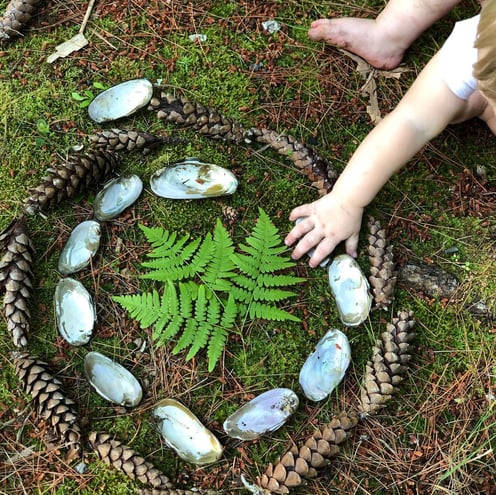








Personal Reflection
Activity 2 - Creating Your Sanctuary
Art Supplies
Natural materials (pebbles, moss, twigs, leaves, etc.)
Box or cardstock
Glue
Optional: felt or fabric
Directions
This activity will help you connect with nature, become more active, and let go of perfectionism, as nature itself is beautifully imperfect.
Step 1. Go outside and gather materials that draw your attention.
Step 2. Use the natural items to create a place of sanctuary where you feel protected and nurtured. It can be an imaginary place or somewhere you’ve actually been. Remember, there is no right or wrong way to do this. You may choose to build your sanctuary outside or return home and complete it there.
From: Thirsty for Art
















